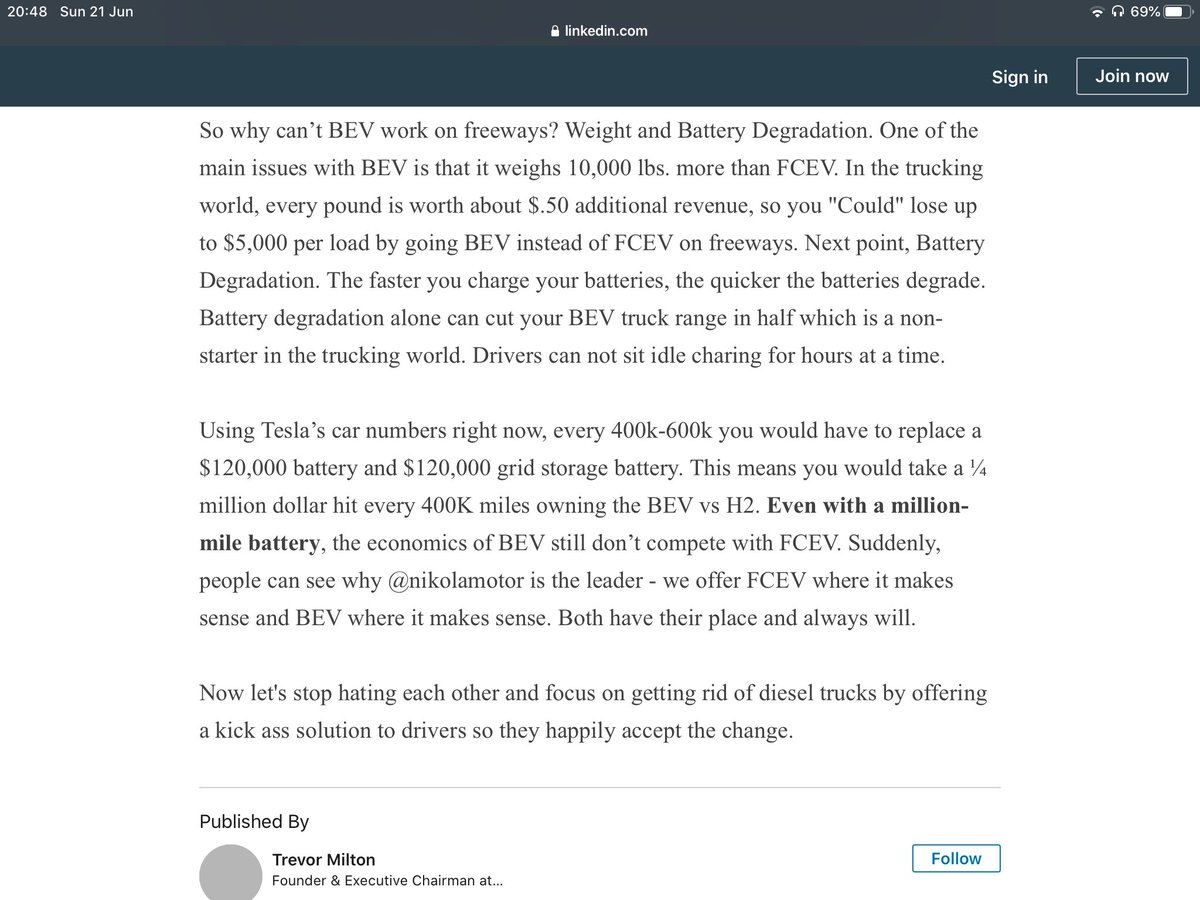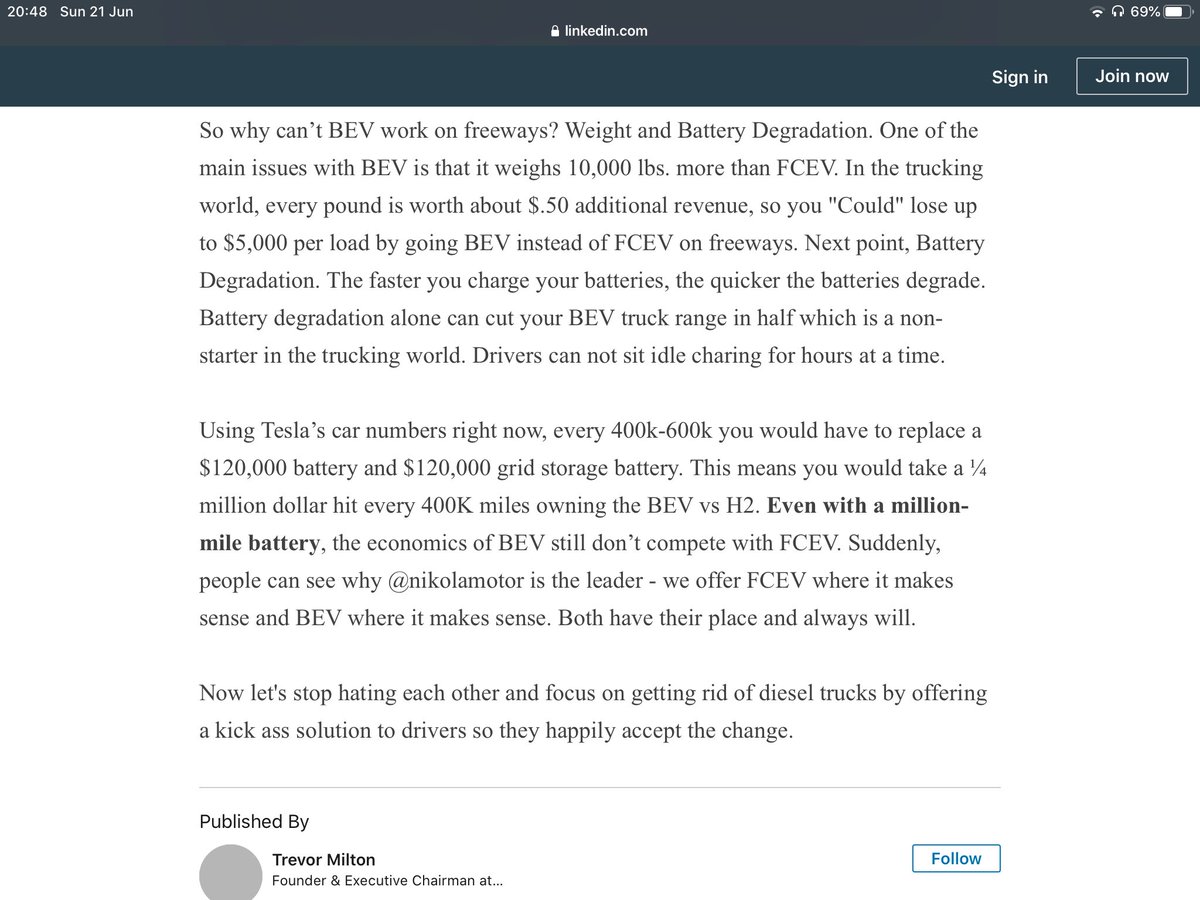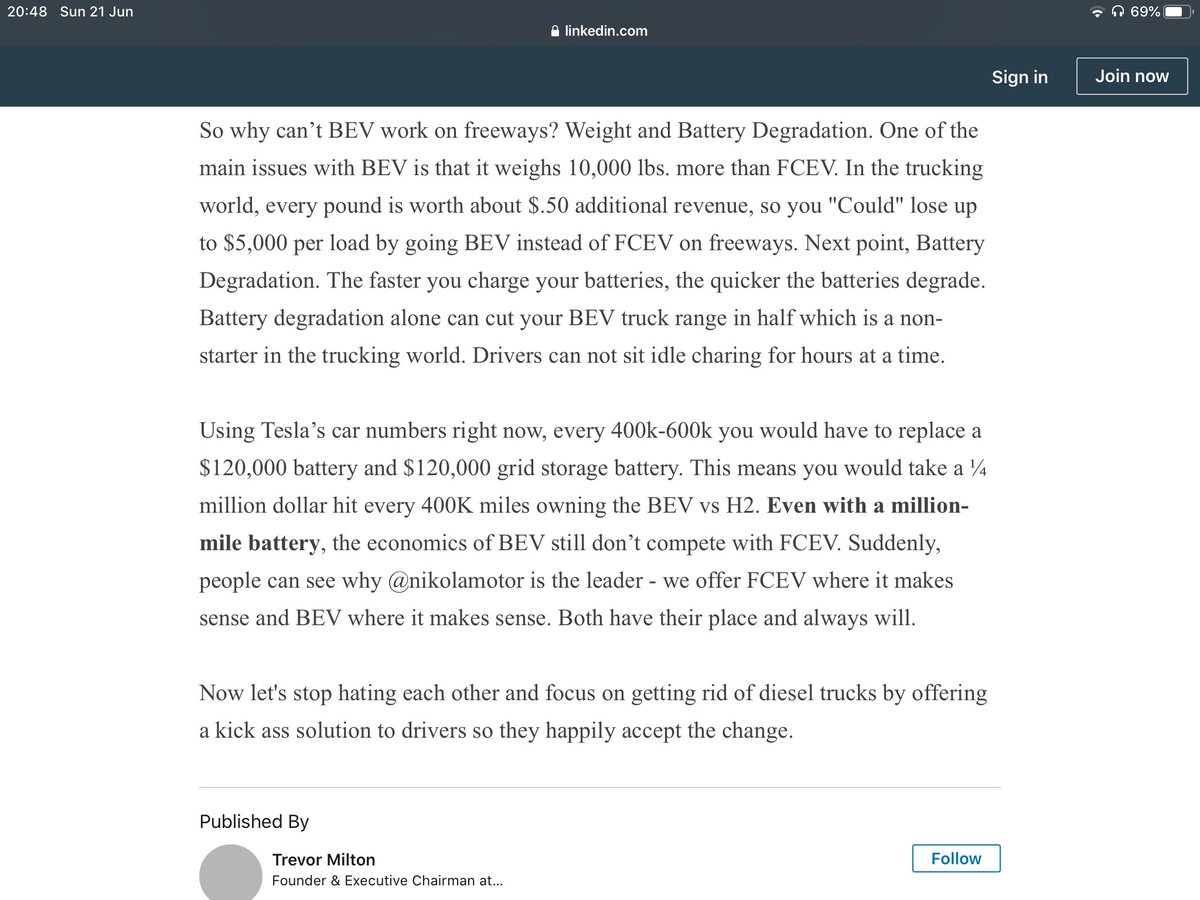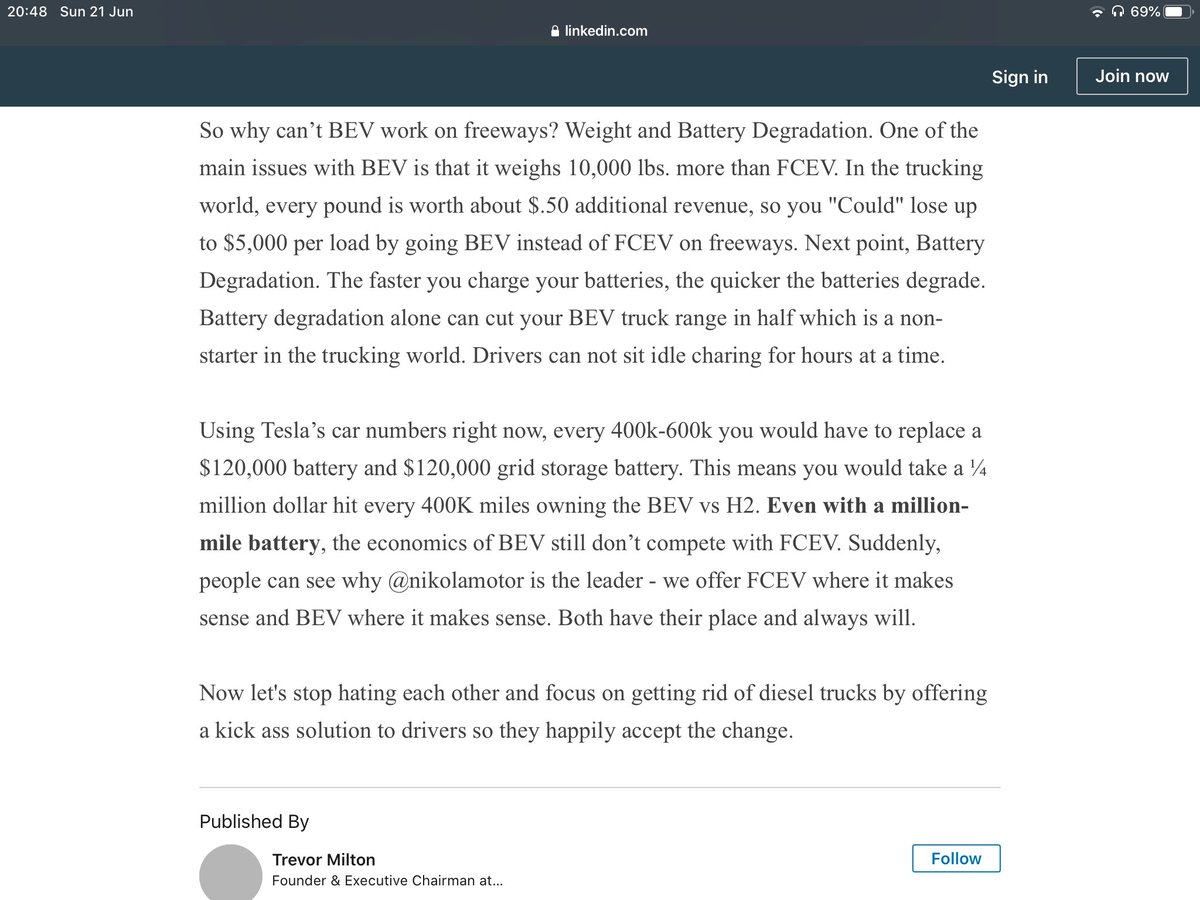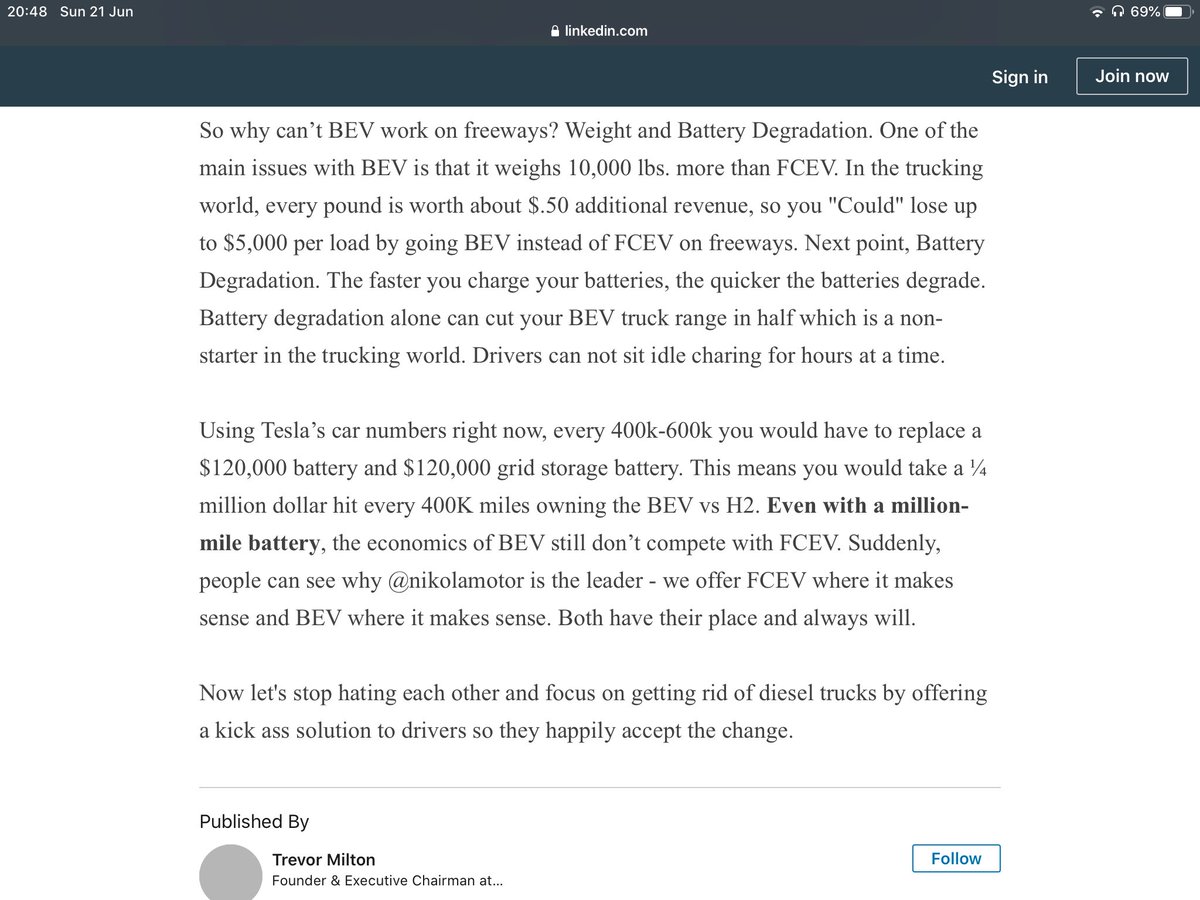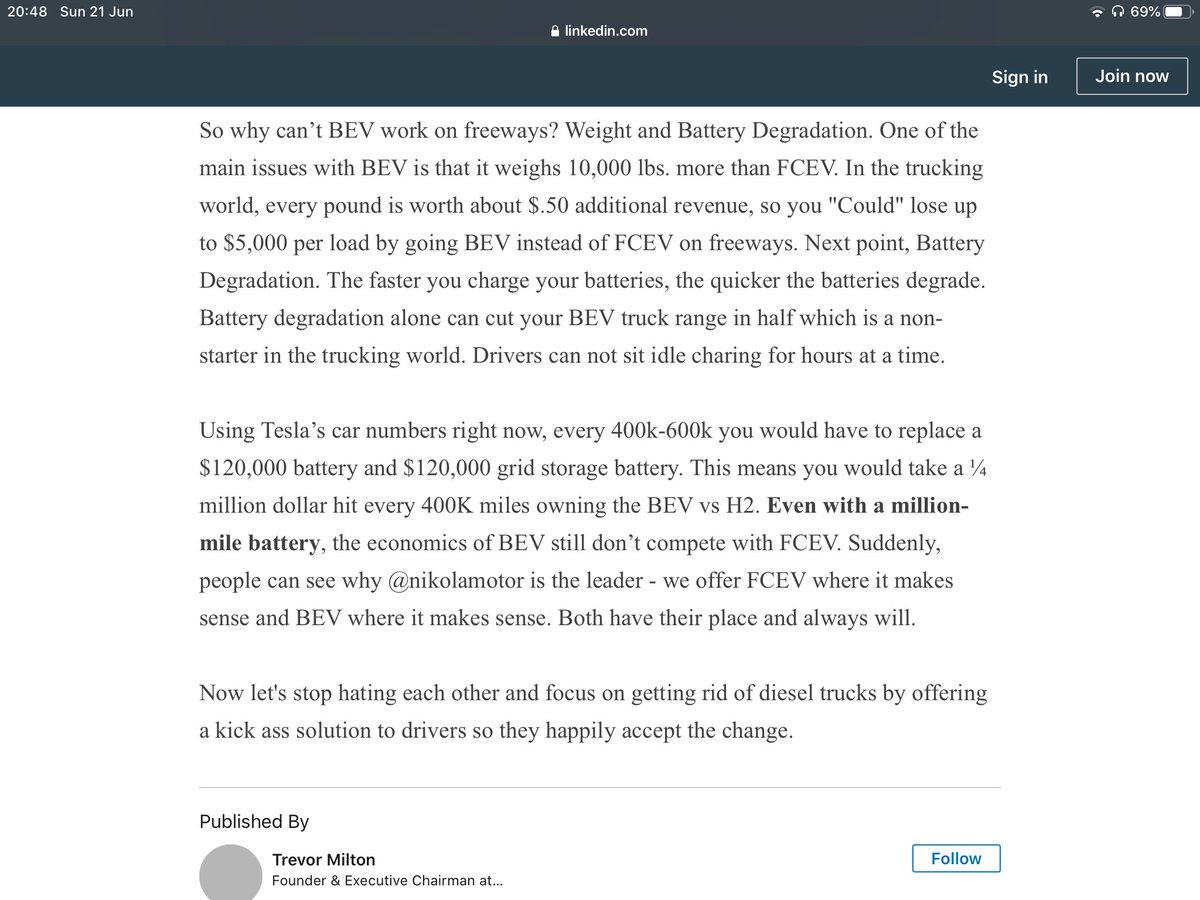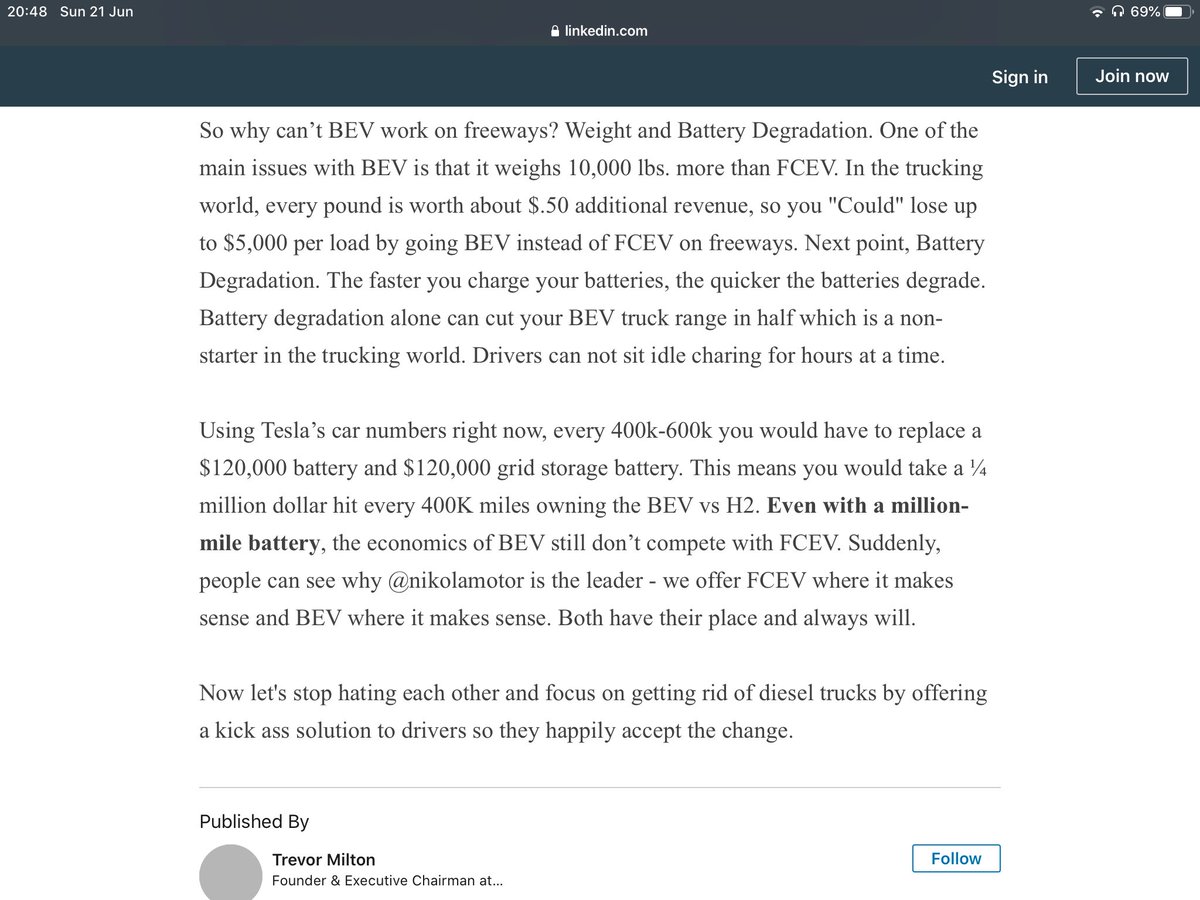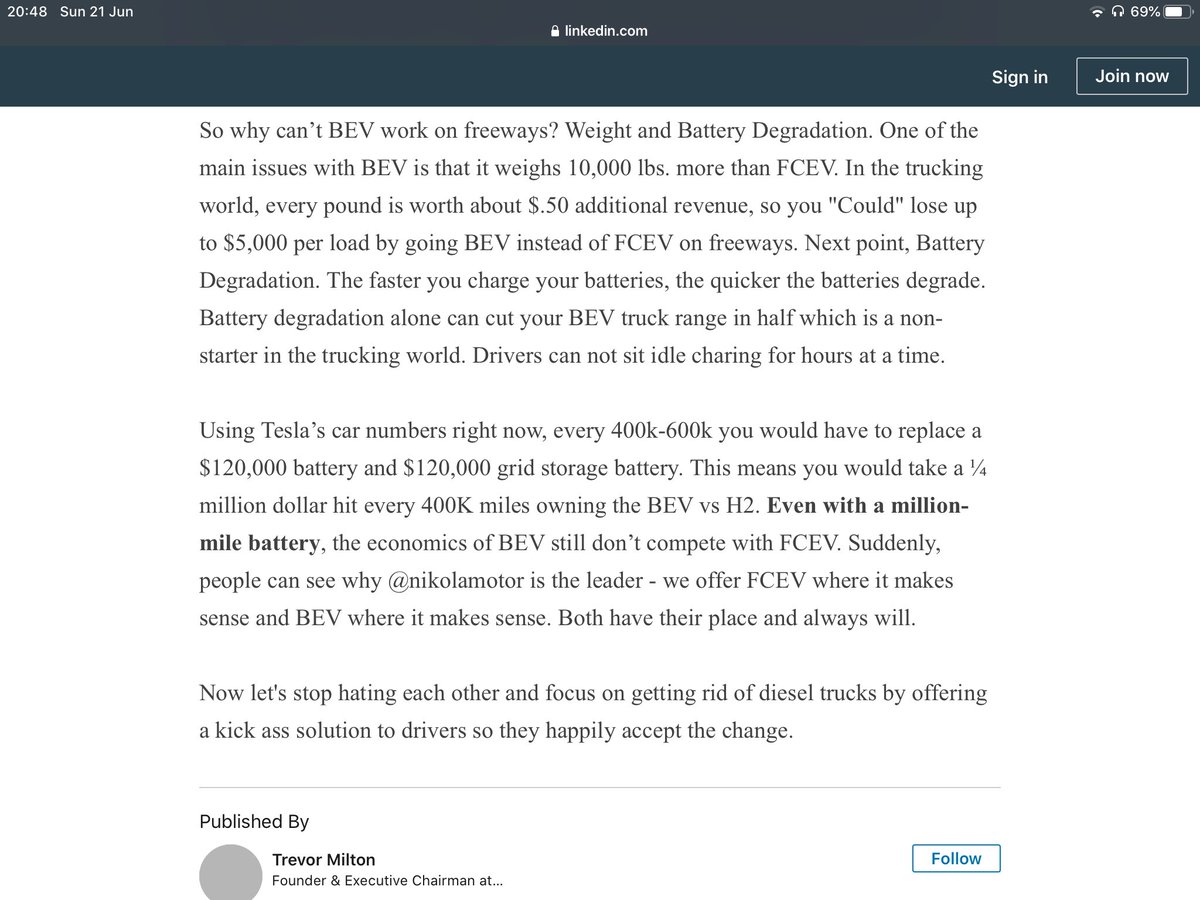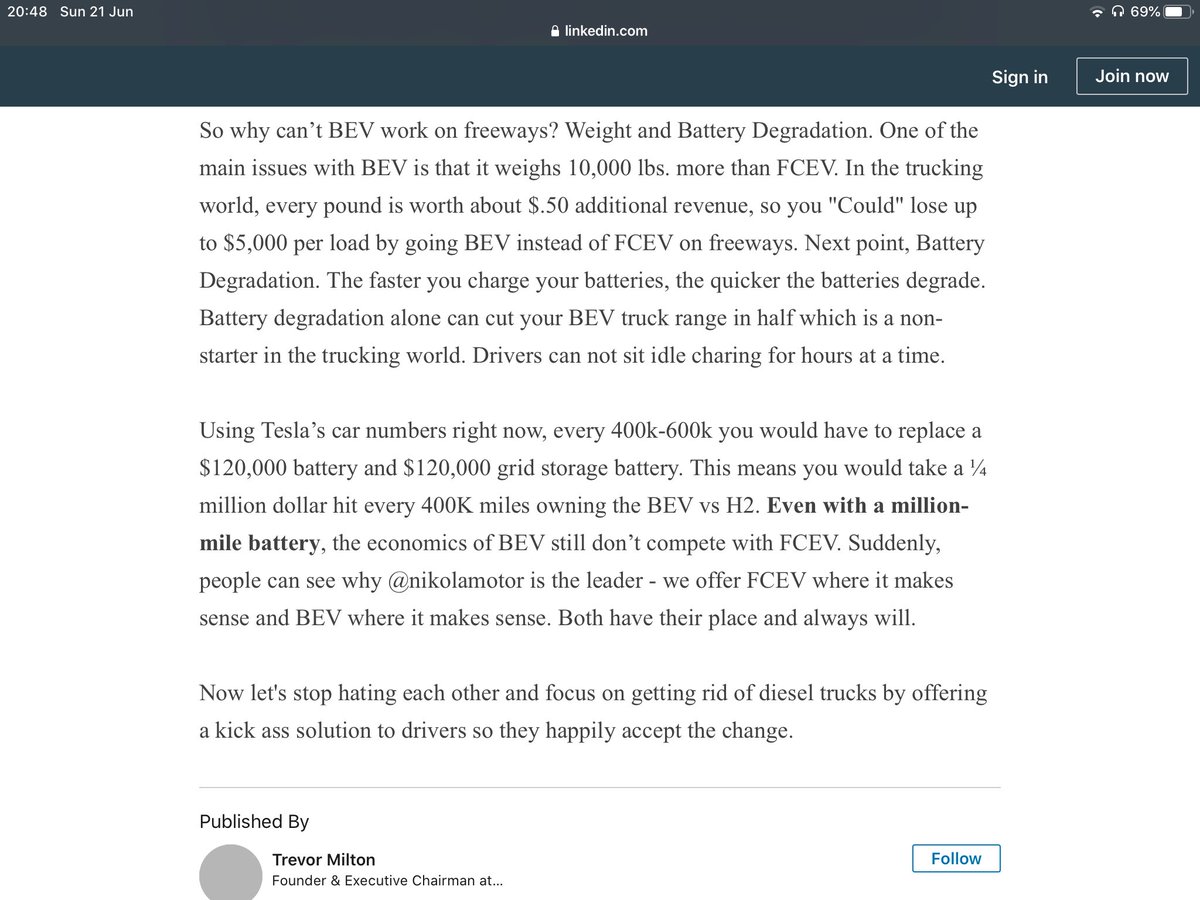$NKLA $NKLAQ
As some of you may have seen, Trevor posted some propaganda on LinkedIN, which means I need to debunk it. It looks like I’ll be here a while! Here goes... [Thread]
Very first sentence and already a lie! That is, unless he also thinks FCEV won’t make it to market! https://abs.twimg.com/emoji/v2/... draggable="false" alt="🤣" title="Lachend auf dem Boden rollen" aria-label="Emoji: Lachend auf dem Boden rollen">
https://abs.twimg.com/emoji/v2/... draggable="false" alt="🤣" title="Lachend auf dem Boden rollen" aria-label="Emoji: Lachend auf dem Boden rollen">
As some of you may have seen, Trevor posted some propaganda on LinkedIN, which means I need to debunk it. It looks like I’ll be here a while! Here goes... [Thread]
Very first sentence and already a lie! That is, unless he also thinks FCEV won’t make it to market!
Before I continue reading, let’s debunk this right off the gate! Every Tesla model has an option for a significantly more than 300 mile range. *Not one* person has ever complained that they have too much range. Moreover, these >300mile vehicles still all have track records!
BEVs are not just ‘more efficient’. In poor circumstances they are still at least twice as efficient! That’s no folly either, especially for cost per mile trucking! But onto the real horseshit.
Trevor calls the grid expensive, but let’s consider how hydrogen is made.
Trevor calls the grid expensive, but let’s consider how hydrogen is made.
First of all, 90% of hydrogen is made by Natural Gas Steam Reformation, a process that produces CO2 and other pollutants. In that case, hydrogen may as well be just another fossil fuel, which is maybe why the oil industry is so ready to adopt it. But I don’t want to be unfair...
so let’s give Trevor a bit of benefit of doubt and say his hydrogen is produced through electrolysis. As the name implies, electrolysis uses electricity. It does this to separate water into hydrogen and oxygen. (The almost exact opposite of a fuel cell).
So, where does this electricity come from? Well, per recent comments, it will come from no other but the national grid! That’s the very grid that Trevor attacks BEVs for using. What a complete hypocrite!
[Bloody hell, I’ve written so much and yet still hardly dented this bitch]
[Bloody hell, I’ve written so much and yet still hardly dented this bitch]
Now some of you may know that Trevor compares his grid energy from the freeway to the infamously expensive Californian grid. And if you are a sharper reader, you too will realise that this is disingenuous bullshit worthy of a false marketing fine.
Whilst it’s true that cities have higher rates so city trucks will cost more to charge than otherwise, *Tesla isn’t just making city trucks!* Their 500mile BEV will run on the same freeways that Nikola wants their trucks to. What does that mean? The same fucking rates!
Sadly, dear reader, this isn’t even the whole story. The reality is that, whatever the grid price, Tesla will charge customers a flat $0.07/kWh! This applies to long and short haul routes! Tesla’s business is not charging, which allows them to price their chargers at whatever
they want! Trevor does know this already but prefers to stick to the lie that BEVs and FCEVs won’t compete. They will, and by fuck will Nikola investors feel it!
[Phew, that’s screenshot 1 of 5 covered]
[Phew, that’s screenshot 1 of 5 covered]
Oh thank fuck, I’ve already covered most of this. Right, so let’s assume the Tesla Semi has 1.1MWh. At $0.07/kWh, the cost to refill 0% to 100% (which you don’t want to ever do with current tech) is a whopping 77 bucks! Bwahaha, is that it? That’s nothing!
Now Nikola’s estimated hydrogen costs seems to get lower and lower the more Trevor Milton tweets it into existence. Even at the (fictional) price of $2.50/kg and a tank of equivalent range having 62.5kg (even this is more than optimistic), it will take $156.25 to fill the Nikola
truck. That’s over double the effectively guaranteed price for the Tesla! Previously I mentioned that you wouldn’t want to charge the Tesla 0% to 100%. Whilst this is true, it’s more than likely that the production Semi will have a nice bit of extra range up its sleeves.
Enough to make a charge equating to 500miles far less damaging to the cells. Now the extra capacity you’d get just from adding more cells would decrease per mile efficiency thus marginally pushing up recharge costs. However, depending on what we’re told in Battery Day, I expect
that Tesla has made cells with much better energy density, eliminating any concern of worse efficiencies.
One thing that always goes unmentioned by Trevor is that the fuel cell vehicles also have huge battery packs. 320kWh according to the Nikola One unveiling.
One thing that always goes unmentioned by Trevor is that the fuel cell vehicles also have huge battery packs. 320kWh according to the Nikola One unveiling.
This pack, if charged at the same time as hydrogen filling, would take energy from the grid without any of the ‘grid buffer’ mentioned in the last paragraph of this screenshot. Now the grid price is not set in stone but let’s be generous and also assume $0.07/kWh for the Nikola.
At this price, 320kWh would cost an extra $22.40. Adding this to the cost of hydrogen, we get $178.65 to fill the Nikola truck! One problem here is that we’ve assumed 500 miles of just hydrogen energy and some extra miles of battery energy.
Dividing the 320kWh by the 1.1MWh for the 500 mile BEV and multiplying by those 500 miles we find that the buffer pack will add an extra 145 miles of range for a total of 645 miles of range. Now, to find the average cost per mile comparison we can divide price by range.
For the Nikola, that’s $178.65/645miles which is $0.277 per mile (3s.f.). For the Tesla, that’s $77/500miles which is $0.154 per mile (exactly). Even in a really optimistic future target for Nikola that still is little more than a faint dream, the cost per mile of fuelling is
still 80% more than the promised rate for the Semi. Didn’t hear me? I said 80% MORE! So far from hydrogen being cheaper, it is (as predict) far more expensive! After this I don’t want to hear Trevor say hydrogen is cheaper ever again!
Ok, and to adress the last paragraph from this screenshot, whilst this paragraph is more or less correct, it is also irrelevant as Tesla is promising $0.07/kWh in any and all circumstances. How they reduce their own costs is up to them but for the customer, it’s of no concern.
[Wow, have I really written this much and I’m not even halfway through?]
For the reasons in the directly above tweet, I am not denying nor agreeing with any of the points in the first paragraph here but instead refusing to fall for the red herring. It’s irrelevant!
For the reasons in the directly above tweet, I am not denying nor agreeing with any of the points in the first paragraph here but instead refusing to fall for the red herring. It’s irrelevant!
The next para is complete bollocks! Long haul trucks will do up to 100k miles per year according to http://hdstruckdrivinginstitute.com"> http://hdstruckdrivinginstitute.com . Even with Tesla’s old Model S and X cells this would be only about 15% degradation in 3 years of trucking. That’s 500miles down to 425miles on old tech!
The reality of the situation is that Tesla’s researcher Jeff Dahn has already announced a battery with enough cycles to propel the vehicle for 1 million miles before the accepted usability lifetime end of 20% degradation, which would mean the truck is down to 400miles.
Far from Trevor’s suggested 30% loss in 3 years, there would be a less than or equal to 20% loss in as many as 10 years. If the extra 100 miles of range really was that important to you, you would have to buy a new pack, though by that time it would be far cheaper as it would
have had a further 10 years of technology improvements and economies of scale. This is a number admittedly plucked from my arse but I expect the replacement pack to only cost 60% of the original pack. Far from ‘game over’!
Also, Trevor used ‘you’re’ wrong and that’s unacceptable!
Also, Trevor used ‘you’re’ wrong and that’s unacceptable!
[Onto screenshot 4 of 5]
Luckily I can also largely dismiss this first paragraph too as I’ve already covered it. Tesla can sell energy at whatever price they want because they don’t have to sell at a profit. This advantage is unique to Tesla as they are the only company with a
Luckily I can also largely dismiss this first paragraph too as I’ve already covered it. Tesla can sell energy at whatever price they want because they don’t have to sell at a profit. This advantage is unique to Tesla as they are the only company with a
charging network *and* a high margin Auto business. That high margin auto business is what pays for Superchargers and Megachargers. This leverage will enable them to outprice any competition indefinitely without feeling much pain. This is what Trevor Milton doesn’t understand.
Isn’t [fuel cell tech] less efficient? Isn’t it a fool cell like Elon says? The answer is simple; yes!
As per this idea that Nikola will source their energy directly from renewables, this is not only possible for Nikola Motors (duh). Tesla could as easily do this, especially as they own their own Energy division!
As for being a fool, why are you twisting Elon’s words? He said the fuel cells were fool cells, not that those who believe in them are fools. Honestly, why does Trevor have this persecution complex?
And as for battery powered rockets? Don’t prove your previous question right! Rockets require propellant to fly, that’s just Newton’s 3rd law. As ion engines produce less than one g, the only current way to do this is with rocket fuel. And whilst some rockets are fuelled with
hydrogen, no rocket is entirely powered by hydrogen fuel cells! Again, a lot of the advantages and disadvantages that Trevor separates are actually applicable to both technologies. He needs to stop pretending he doesn’t know this!
And whilst I would say that one size doesn’t always fit every application, BEVs do fit this situation best! This thread so far has shown that FCEVs are not cheaper than BEVs based only on Trevor’s debunked arguments but there are even more benefits Tesla has. (Mentioned later)
[Last segment now]
Weight: Trevor claims that the BEV weighs 10 000lbs more than their FCEV. Whilst this isn’t explicitly Tesla’s Semi he is referring to, contextually we can be pretty certain it is. So is the Tesla Semi too heavy? Well, according to https://www.popularmechanics.com/cars/trucks/a14444364/tesla-semi-weight/,">https://www.popularmechanics.com/cars/truc... not
Weight: Trevor claims that the BEV weighs 10 000lbs more than their FCEV. Whilst this isn’t explicitly Tesla’s Semi he is referring to, contextually we can be pretty certain it is. So is the Tesla Semi too heavy? Well, according to https://www.popularmechanics.com/cars/trucks/a14444364/tesla-semi-weight/,">https://www.popularmechanics.com/cars/truc... not
so. Far from being 10klbs heavier, the Semi is actually estimated to be a couple hundred pounds lighter. Take this with a grain of salt though as this is not an official number. However, there are also more factors in the Semi’s favour. As mentioned earlier, Battery Day is soon
, which will almost definitely feature new cell chemistry with improved energy density. With this, Tesla can either reduce weight, increase range or a mix of both. As such, Trevor’s strangely rounded estimate will likely be proven outdated in short order.
At full load, Trevor would be right to say that vehicle weight does matter. However, the vast, vast majority of goods will fill the truck trailer’s volume *before* nearing its max weight. For all of these goods, even a 10klbs weight difference would have no impact on economics.
Degradation: As I said, Tesla already has a battery chemistry rated for 1 million miles which eqautes to 10 years, which does inevitably bring up the question of charging speeds. Whilst I can’t give a conclusive answer to this, Tesla had initially stated that the Semi unveiled in
2017 could already charge 400 miles in only 30 minutes. That was three years ago! Since then Tesla has improved both its cell chemistry and its charger design. This estimate is only my best guess but I reckon that Tesla will easily be able to charge 600 miles in the same time.
If current Tesla cell degradation is anything to go by, these speeds will not severely impact battery degradation, contrary to Trevor’s claims. There is also another benefit unique to Tesla per vehicle charging. Given that the cost to build a charger is reasonably low, it makes
a good amount of sense for trucking companies to operate chargers both at the central depot and all the delivery depots with the idea being to charge the Semi during loading and unloading. This process can take notably longer than half an hour and would further lessen the impact
of fast charging on the battery. In either case, it does not take ‘hours at a time’ as Trevor claims and battery degradation will certainly not be as much as 50%! Even in 20 years I’d be surprised if it reached 30%!
The penultimate paragraph is just pure hogwash! Even if you have to replace the main battery you would not need to replace the storage battery. You don’t even necessarily need a storage battery in the first place, but let’s assume you do for the sake of argument.
This is because the storage battery wouldn’t comprise of equivalent size batteries to the vehicle that are separated and can only charge one truck at a time. The way Trevor suggests things, if you sell x Semis you need x storage batteries. This is not true.
[Ok, on with the thread.]
First, a conclusion of the LinkedIN post. Clearly, Trevor presents some pretty huge misconceptions and lies as facts, which is beyond problematic. Whether or not he knows what he’s doing in that regard is a mystery to me but what is certain is that a lot
First, a conclusion of the LinkedIN post. Clearly, Trevor presents some pretty huge misconceptions and lies as facts, which is beyond problematic. Whether or not he knows what he’s doing in that regard is a mystery to me but what is certain is that a lot
of scientifically illiterate and/or lazy investors are believing him and acting as though it is the word of their god. In many regards, Trevor is turning $NKLA into a cult, more so than the $TSLA investor base is. (I’ll address that in a retweet of this tweet at a later time.)
[Continuing objective thoughts]
There are also still multiple reasons why the Tesla Semi is a much better vehicle than a FCEV equivalent. They are (in order of how I’ll post them) Manufacturing costs, Maintenance, Full Self-Driving. (And also maybe a few throwaway extras)
There are also still multiple reasons why the Tesla Semi is a much better vehicle than a FCEV equivalent. They are (in order of how I’ll post them) Manufacturing costs, Maintenance, Full Self-Driving. (And also maybe a few throwaway extras)
Manufacturing cost: as Giga China, Model Y and soon also GigaBerlin will have shown, Tesla are manufacturing legends! Their factories go up in record time with personal record low capital expenditures. Cheap and fast, but still the best quality.
Asides from a their ability simply to get the truck out early, I also expect the Semi to be far cheaper to produce than 2017 unveil estimates. In contrast, Nikola’s hydrogen trucks are already 5 years behind schedule and with far worse specs than at their unveil.
So even just in terms of factories, Tesla comes out far ahead. Though, as some may say, that doesn’t make too much difference in the actual cost per vehicle after a while. That’s where Tesla also comes in way ahead. As Sandy Munro’s recent teardown of Model Y shows, Tesla really
knows what they’re doing in regards to manufacturing. The manufacturing cost efficiency of the Semi will be astonishing! As for the Nikola FCEVs, those vehicles will be the first ever that they will attempt to manufacture themselves. Tesla’s experience is huge, Nikola’s
experience is practically zero. This undoubtedly will mean that the Nikola manufacturing efficiency will be far worse, making sticker price of the Nikola significantly more than the Semi.
Maintenance: This is a bit of an unexpected advantage for Tesla as hydrogen fuel cells do appear to have less maintenance. Of course, most of the maintenance cost will be in tyres, which is equal for both companies. Other than that, maintenance issues are found in the drivetrain,
moving body parts and general fit and finish stuff. With the Semi’s warranty at a million miles for a lot of components, I expect lifetime drivetrain warranty to only be about $50k to $60k, assuming they can sell the old pack and will need a motor replacement and a few other bits
For the Nikola, one would expect a similarly cheap warranty cost. However, Nikola has never mass manufactured fuel cell drivetrains. As such, I expect the maintenance costs to be far higher, especially for early vehicles.
Moving parts I expect to be similar in terms of maintenance, though with Nikola’s lack of experience penalising them more. I expect the same for fit and finish problems. Whilst the occasional Tesla still has quality issues, I expect those issues will be far less than Nikola’s.
And now the big one, FSD:
The average trucker earns about 36.5 cents/mile. Over the 20year, 2 million mile span that comes out to a whopping $730000! Now of course, no company in the world has FSD yet, though Tesla is undeniably the closest. For their to be no driver, a company
The average trucker earns about 36.5 cents/mile. Over the 20year, 2 million mile span that comes out to a whopping $730000! Now of course, no company in the world has FSD yet, though Tesla is undeniably the closest. For their to be no driver, a company
must have enough data of their software being far safer than #HumanPilot, and then for that company to be given a licence in enough states (or Federal licence) for autonomous truck miles to start making sense.
I’ve been too generous to Nikola today, time to be a little generous to Tesla. Let’s say that Tesla’s no-driver FSD is legalised in 2022. Meanwhile, Nikola has no autonomy, not even a partner. Let’s say they do partner. Their partner will also now have to adapt to using a fuel
cell and to using a truck. Depending on the partner, I’ll say that Nikola’s autonomy won’t be legalised until 2028, a whole 6 years later than Tesla! This means, for 6 years or 600k miles, Tesla will be the only company to offer Level 5 trucks. In terms of labour costs, that’s
$219000 in savings. That’s more than an entire truck, plus a Performance Model 3! This is an advantage Nikola cannot match. Moreover, between 2022 and 2028, with Tesla having legal FSD and Nikola not forseeably having such a capable system, all sane truck buyers will opt for a
new Tesla Semi over a new Nikola truck. With Tesla’s ability to meet demand as the only factor, Nikola will not be able to sell any hydrogen trucks until they can also offer autonomy. For it to take so long will inevitably mean an early bankruptcy. My prediction is for this to
happen in 2025 as Nikola can cut costs like Faraday Future has done.
One other advantage of Tesla’s FSD software is many orders of magnitudes fewer crashes, which is also a nice boost to Tesla customers.
One other advantage of Tesla’s FSD software is many orders of magnitudes fewer crashes, which is also a nice boost to Tesla customers.
Besides a few other tidbits of the Tesla having marginally better aerodynamics and far better efficiency software upgrades, that pretty much ends this beast of a thread. I hope you found it informative and I hope Trevor actually sees it.
[End of thread, have a nice day!]
[End of thread, have a nice day!]

 Read on Twitter
Read on Twitter![Lachend auf dem Boden rollen $NKLA $NKLAQAs some of you may have seen, Trevor posted some propaganda on LinkedIN, which means I need to debunk it. It looks like I’ll be here a while! Here goes... [Thread]Very first sentence and already a lie! That is, unless he also thinks FCEV won’t make it to market! https://abs.twimg.com/emoji/v2/... draggable=](https://pbs.twimg.com/media/EbEQNmyXQAEJK2J.jpg) " title=" $NKLA $NKLAQAs some of you may have seen, Trevor posted some propaganda on LinkedIN, which means I need to debunk it. It looks like I’ll be here a while! Here goes... [Thread]Very first sentence and already a lie! That is, unless he also thinks FCEV won’t make it to market! https://abs.twimg.com/emoji/v2/... draggable="false" alt="🤣" title="Lachend auf dem Boden rollen" aria-label="Emoji: Lachend auf dem Boden rollen">" class="img-responsive" style="max-width:100%;"/>
" title=" $NKLA $NKLAQAs some of you may have seen, Trevor posted some propaganda on LinkedIN, which means I need to debunk it. It looks like I’ll be here a while! Here goes... [Thread]Very first sentence and already a lie! That is, unless he also thinks FCEV won’t make it to market! https://abs.twimg.com/emoji/v2/... draggable="false" alt="🤣" title="Lachend auf dem Boden rollen" aria-label="Emoji: Lachend auf dem Boden rollen">" class="img-responsive" style="max-width:100%;"/>
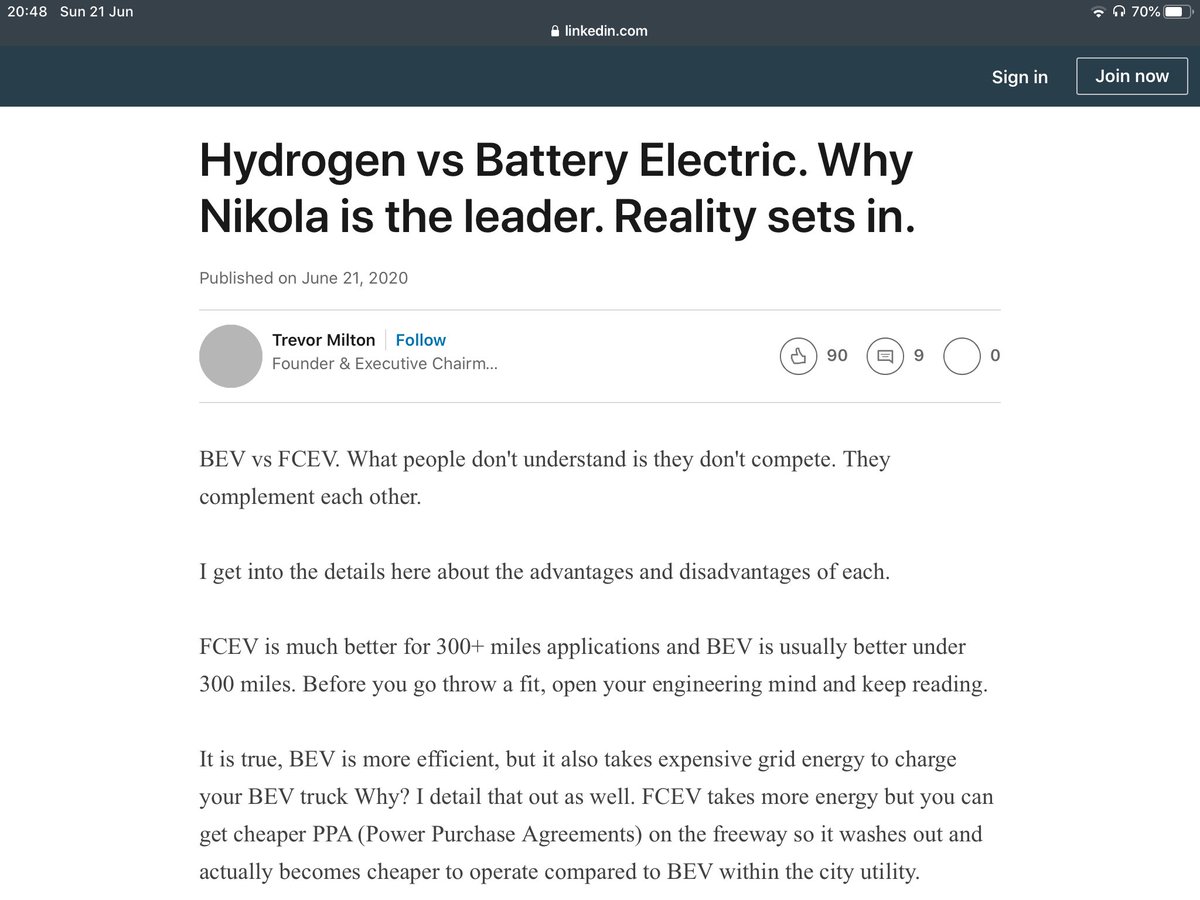
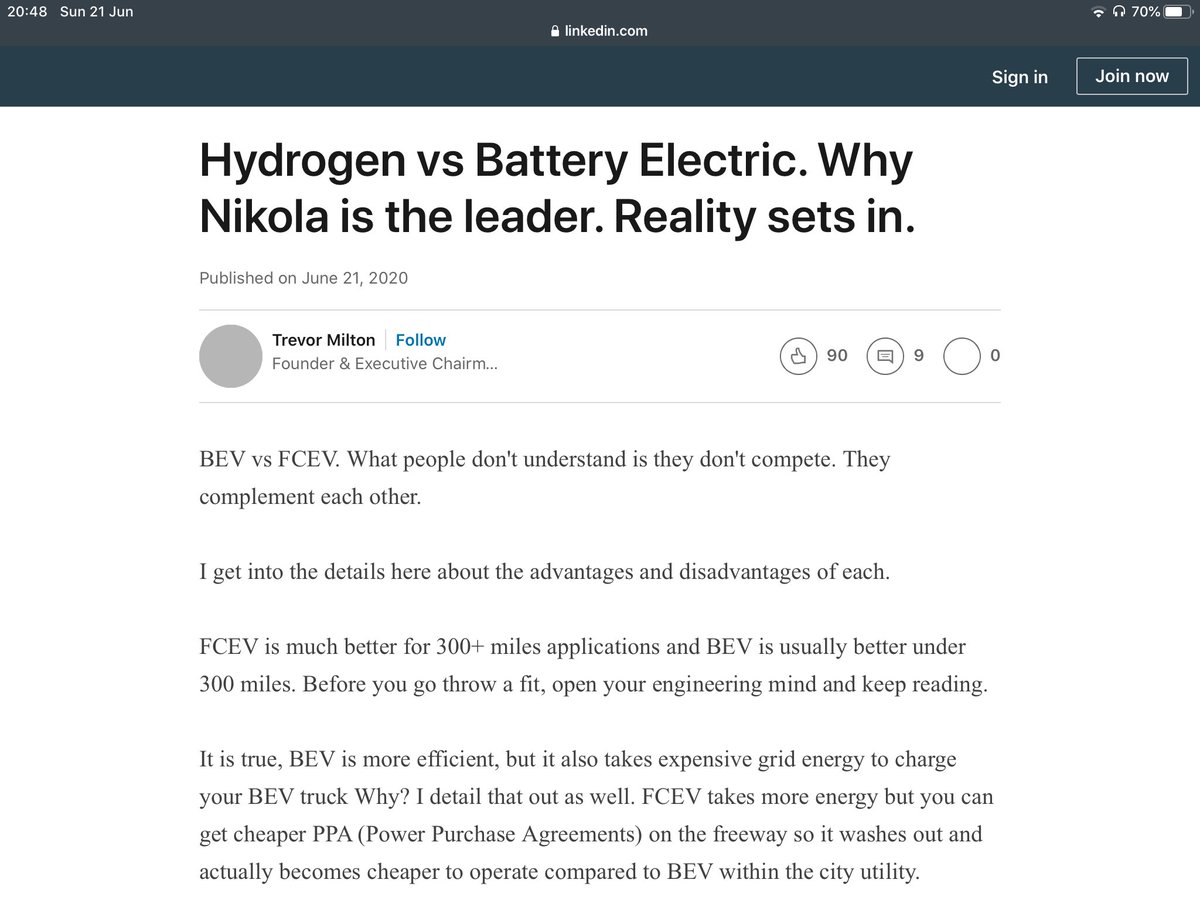
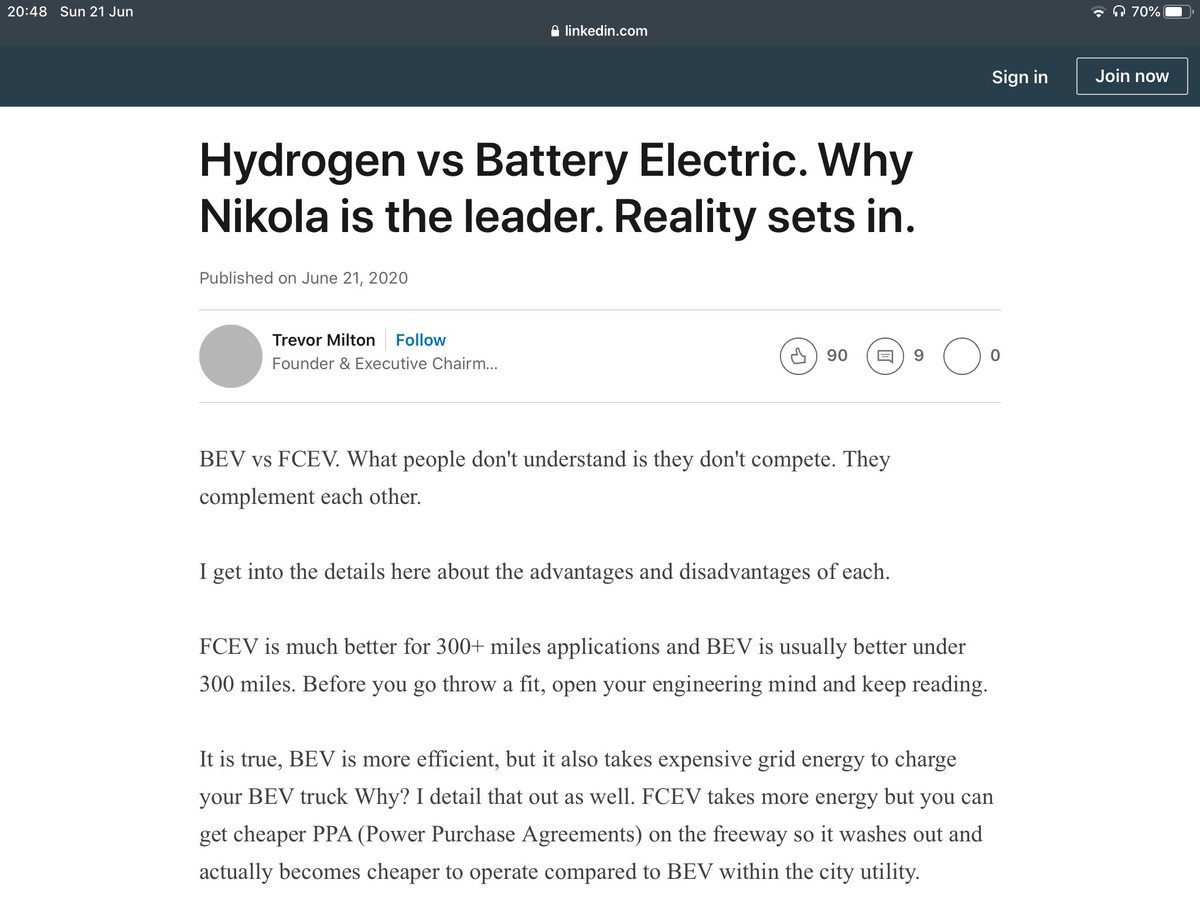
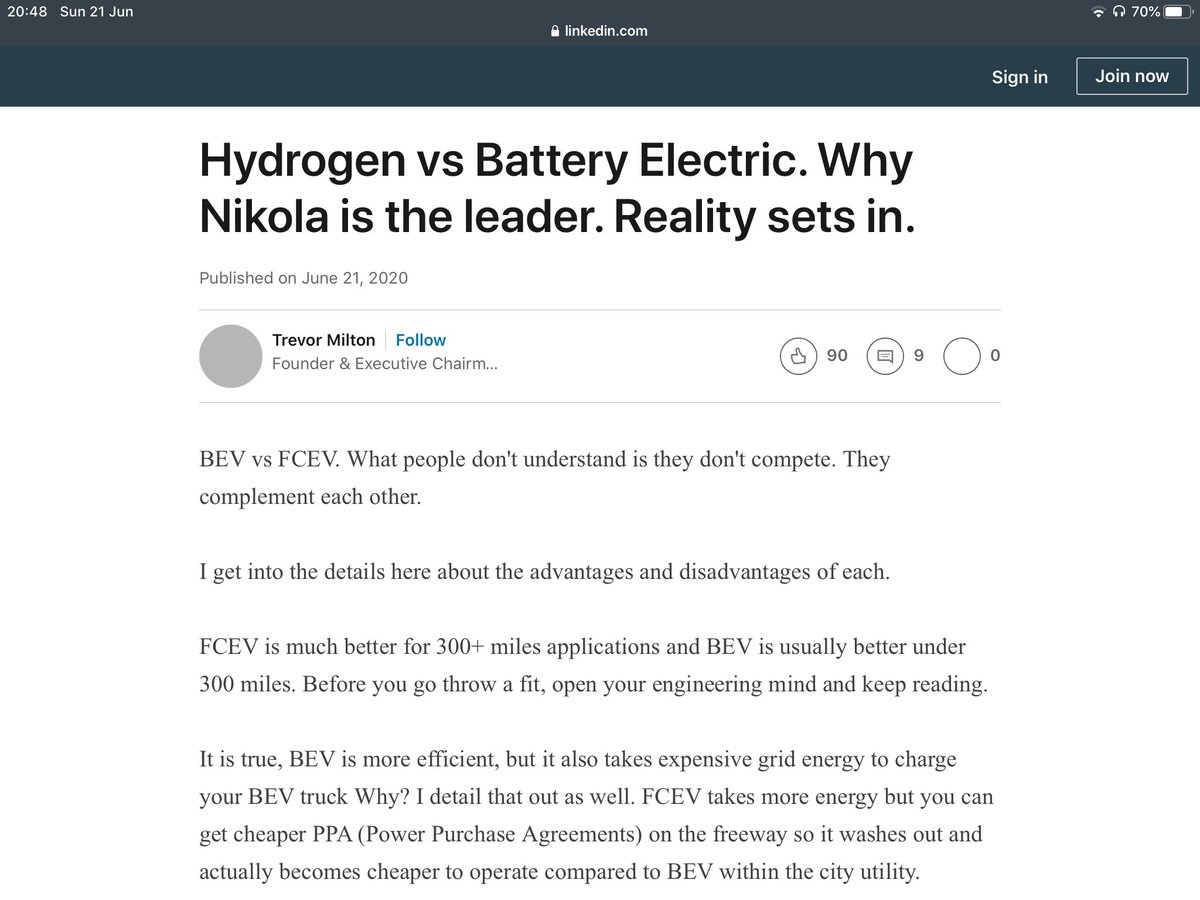
![So, where does this electricity come from? Well, per recent comments, it will come from no other but the national grid! That’s the very grid that Trevor attacks BEVs for using. What a complete hypocrite![Bloody hell, I’ve written so much and yet still hardly dented this bitch] So, where does this electricity come from? Well, per recent comments, it will come from no other but the national grid! That’s the very grid that Trevor attacks BEVs for using. What a complete hypocrite![Bloody hell, I’ve written so much and yet still hardly dented this bitch]](https://pbs.twimg.com/media/EbEQP4bXkAAecJQ.jpg)
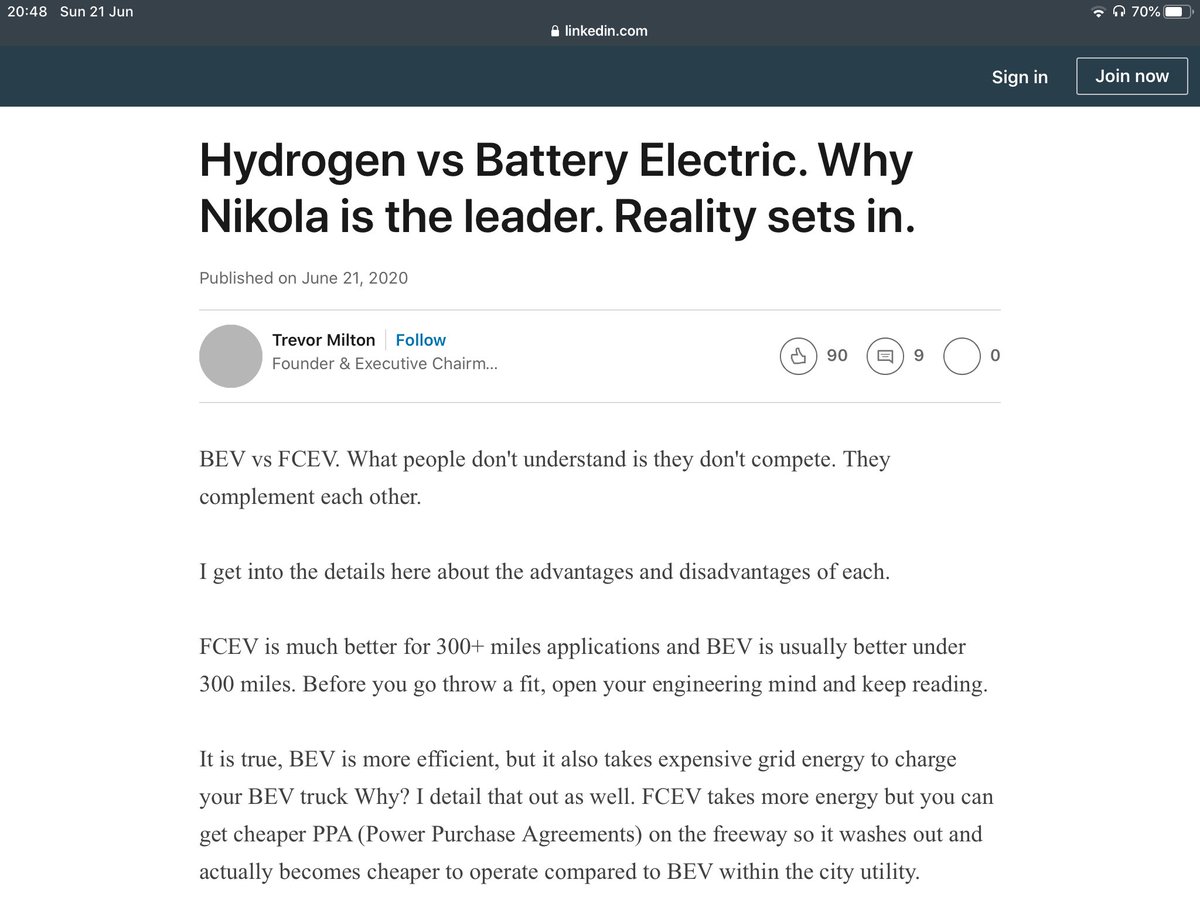
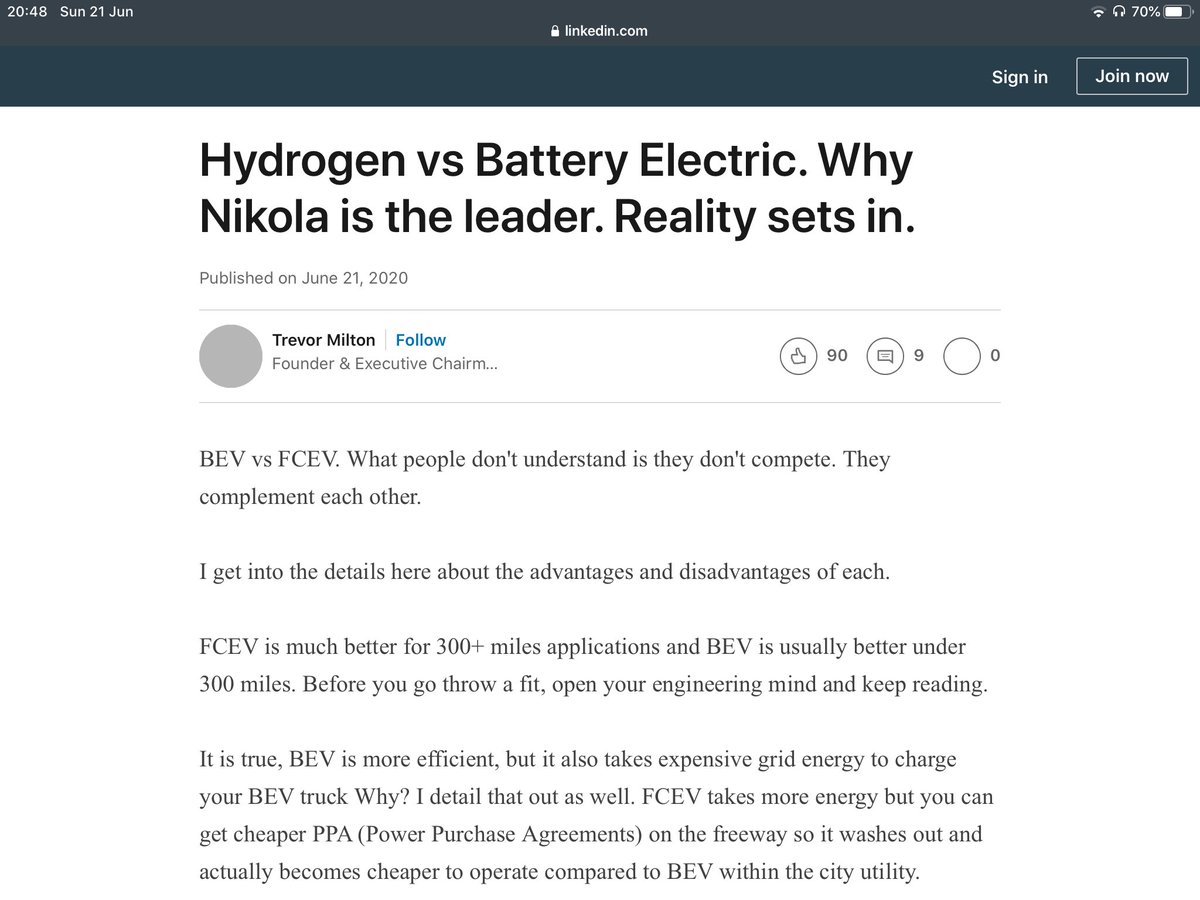
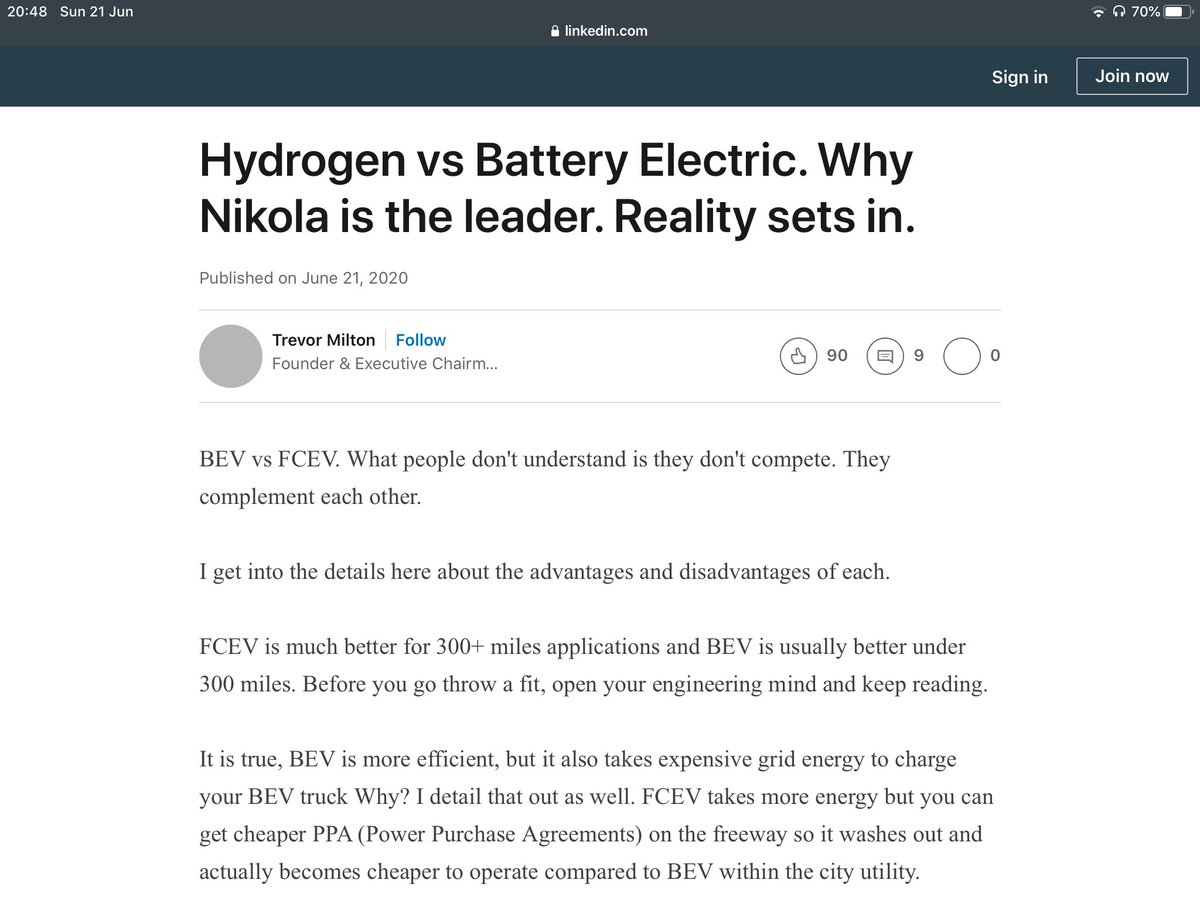
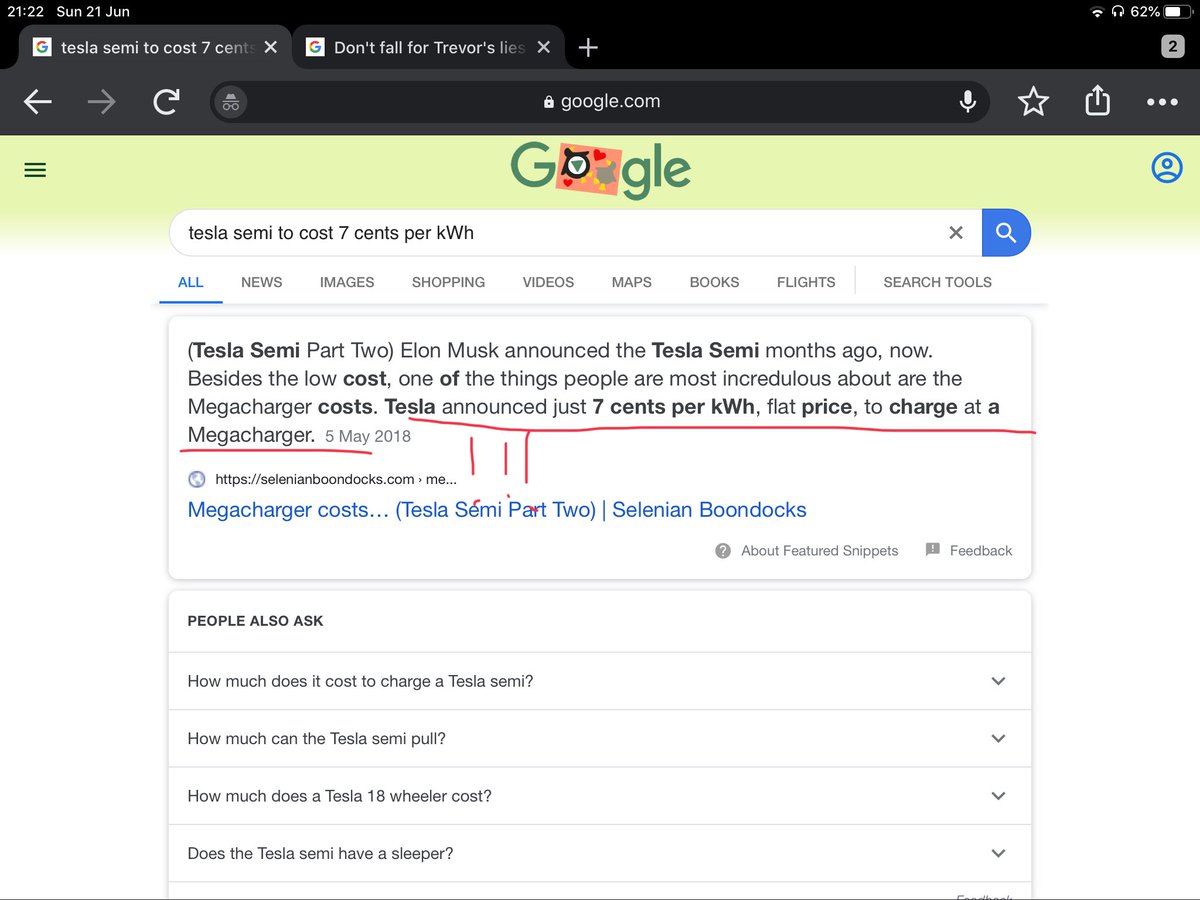
![they want! Trevor does know this already but prefers to stick to the lie that BEVs and FCEVs won’t compete. They will, and by fuck will Nikola investors feel it![Phew, that’s screenshot 1 of 5 covered] they want! Trevor does know this already but prefers to stick to the lie that BEVs and FCEVs won’t compete. They will, and by fuck will Nikola investors feel it![Phew, that’s screenshot 1 of 5 covered]](https://pbs.twimg.com/media/EbEQR-6XkAEf2C-.jpg)
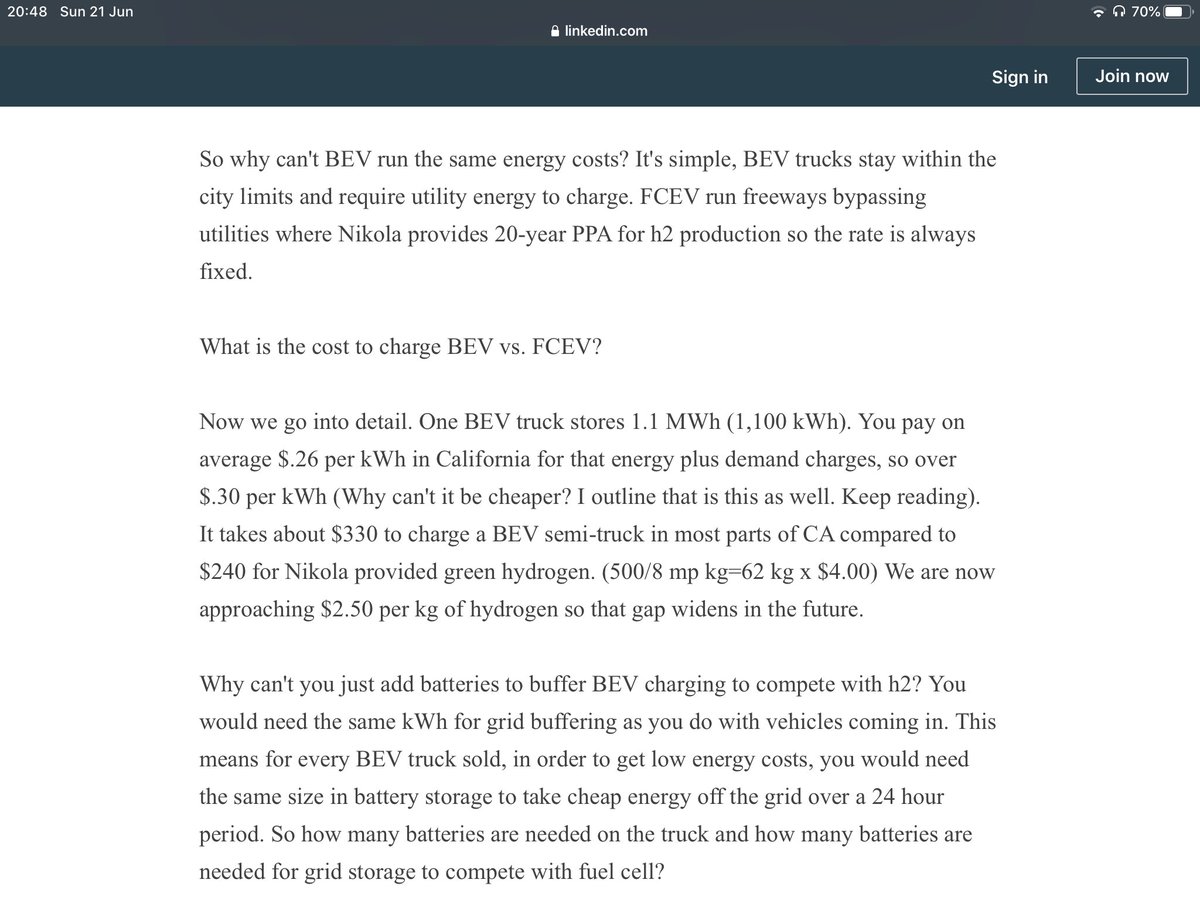


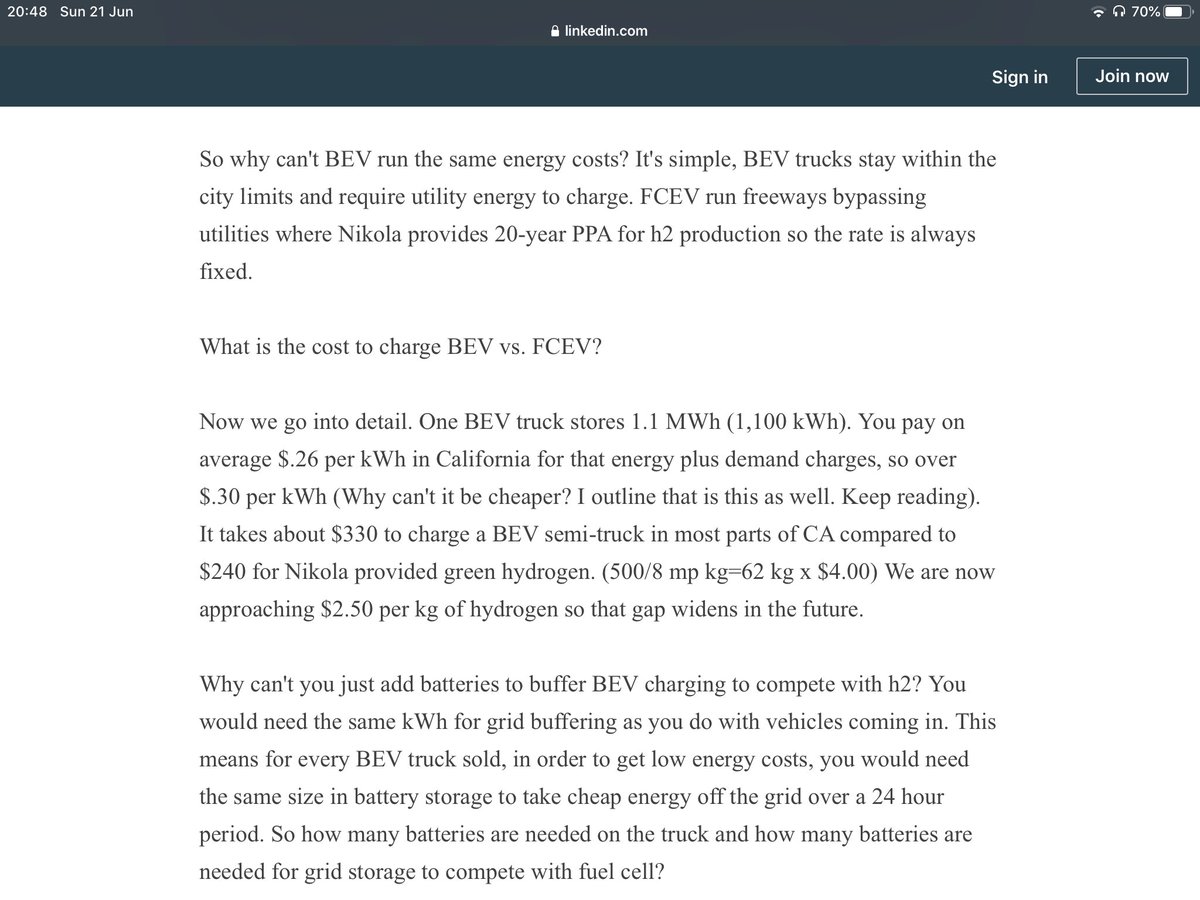

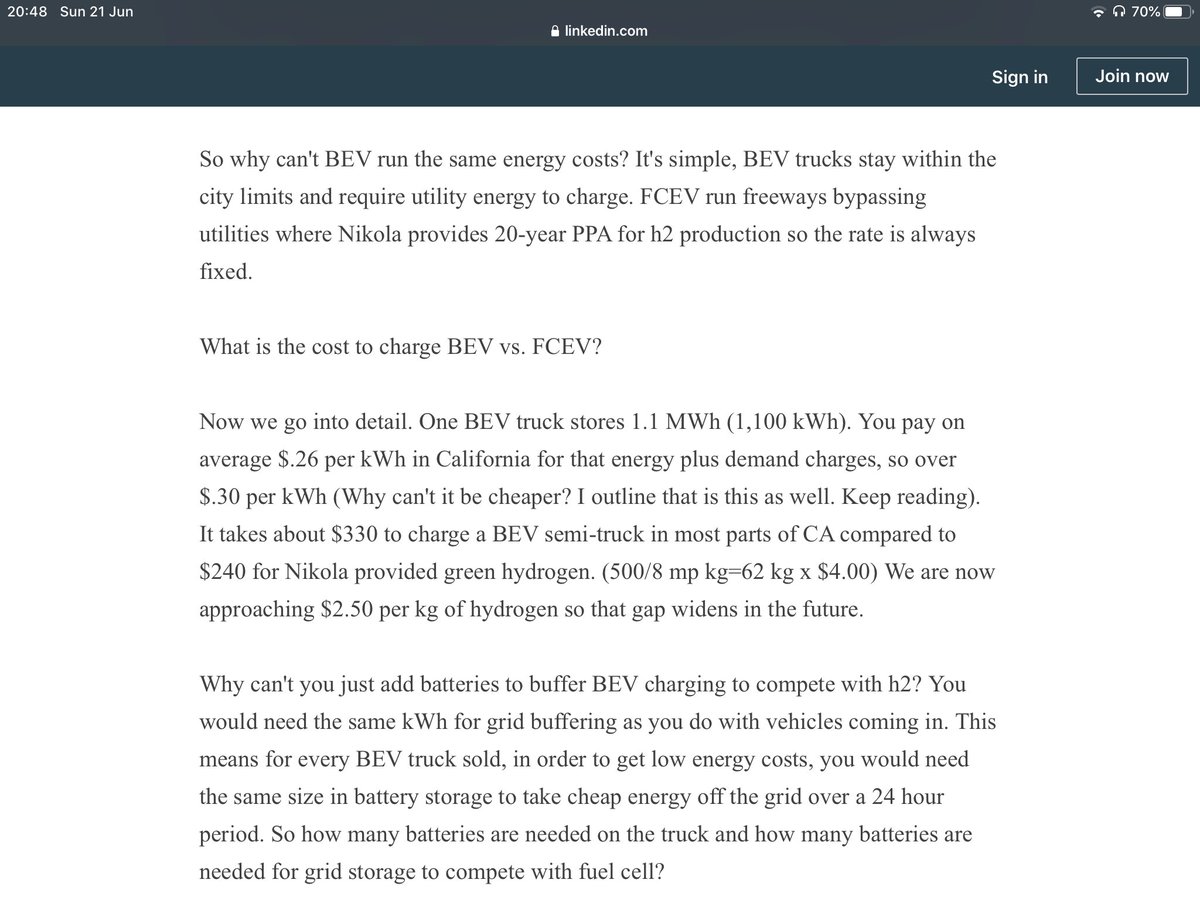
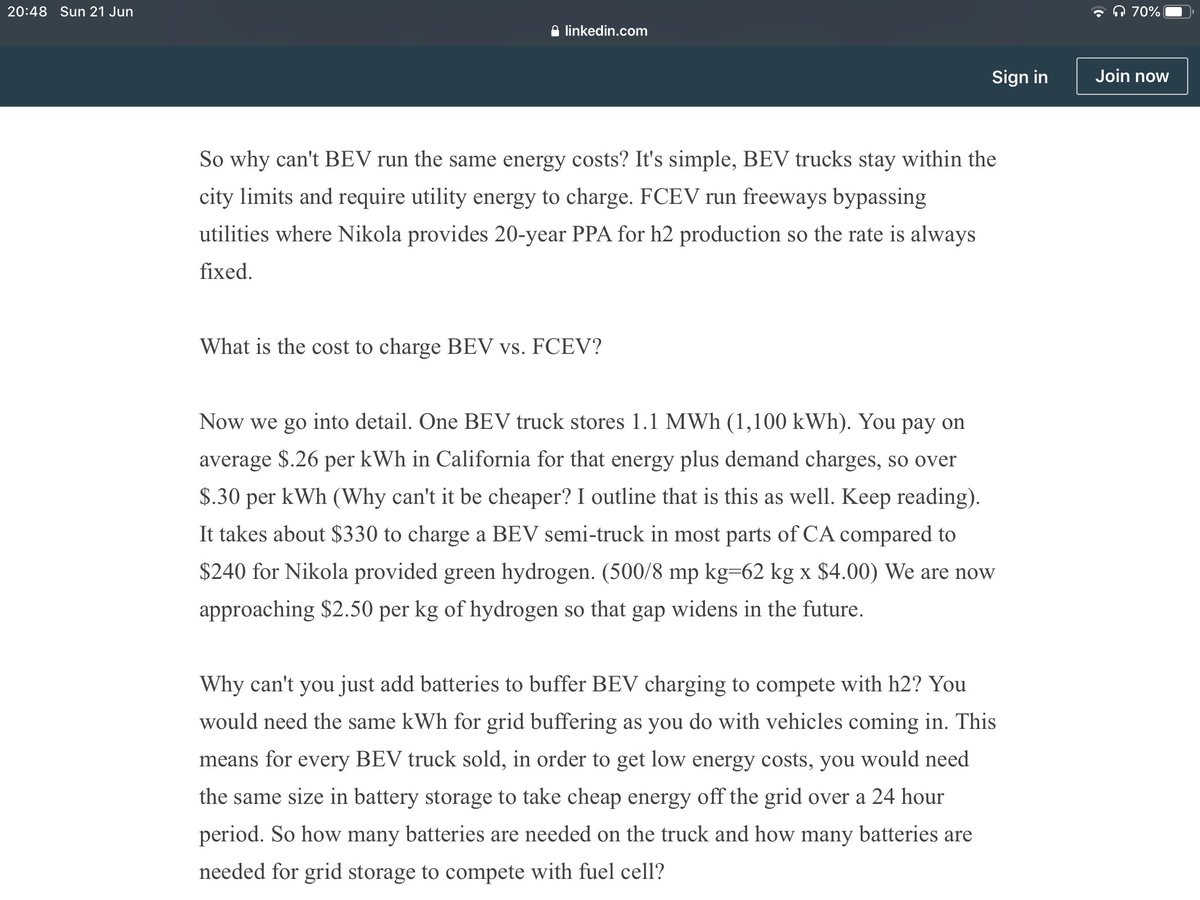

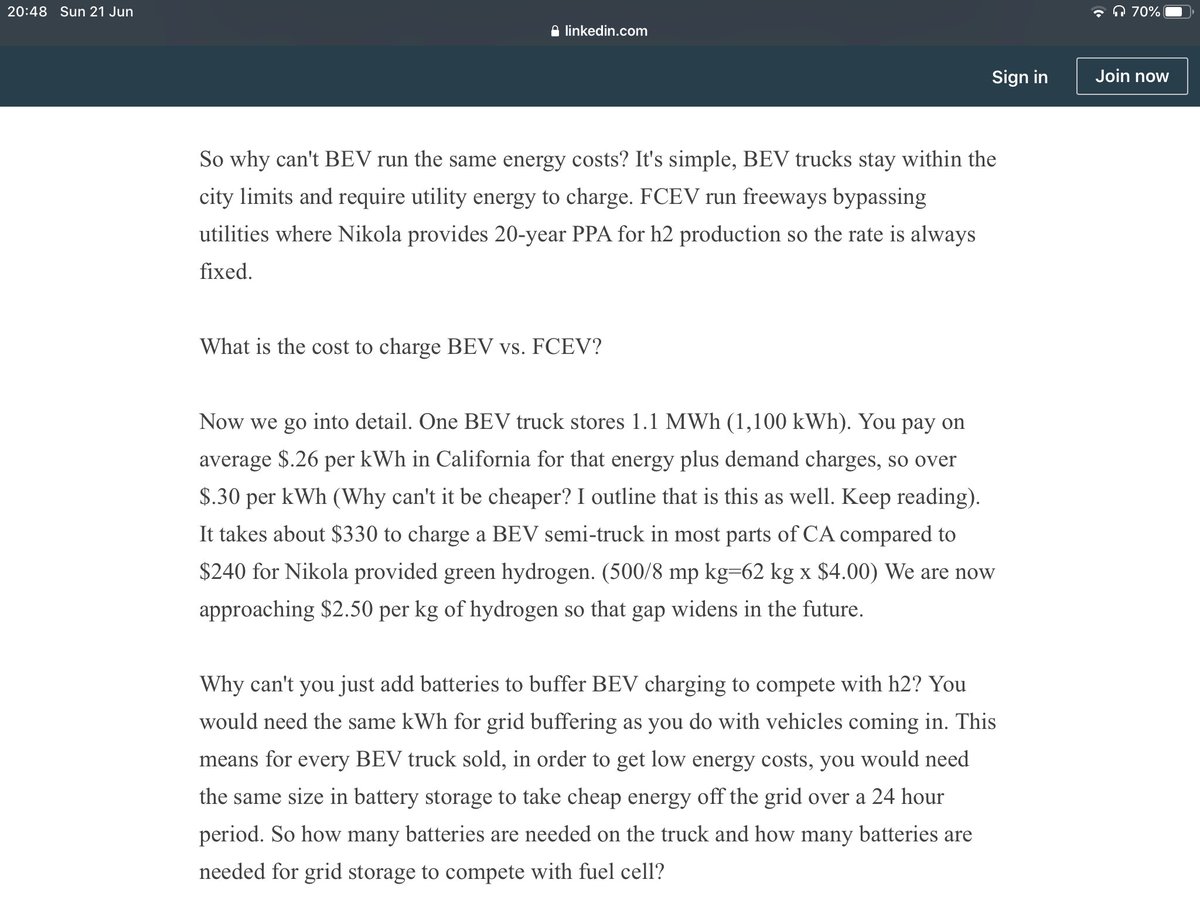
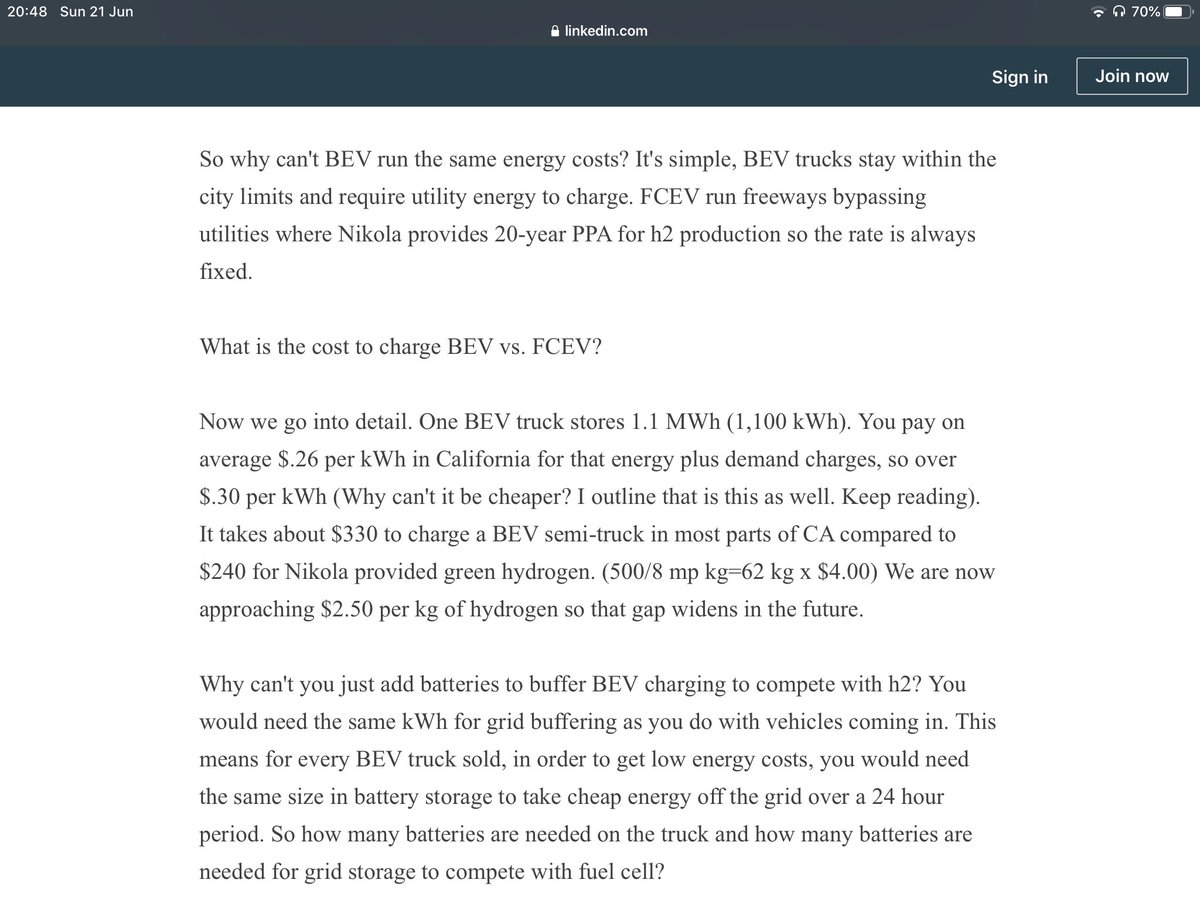
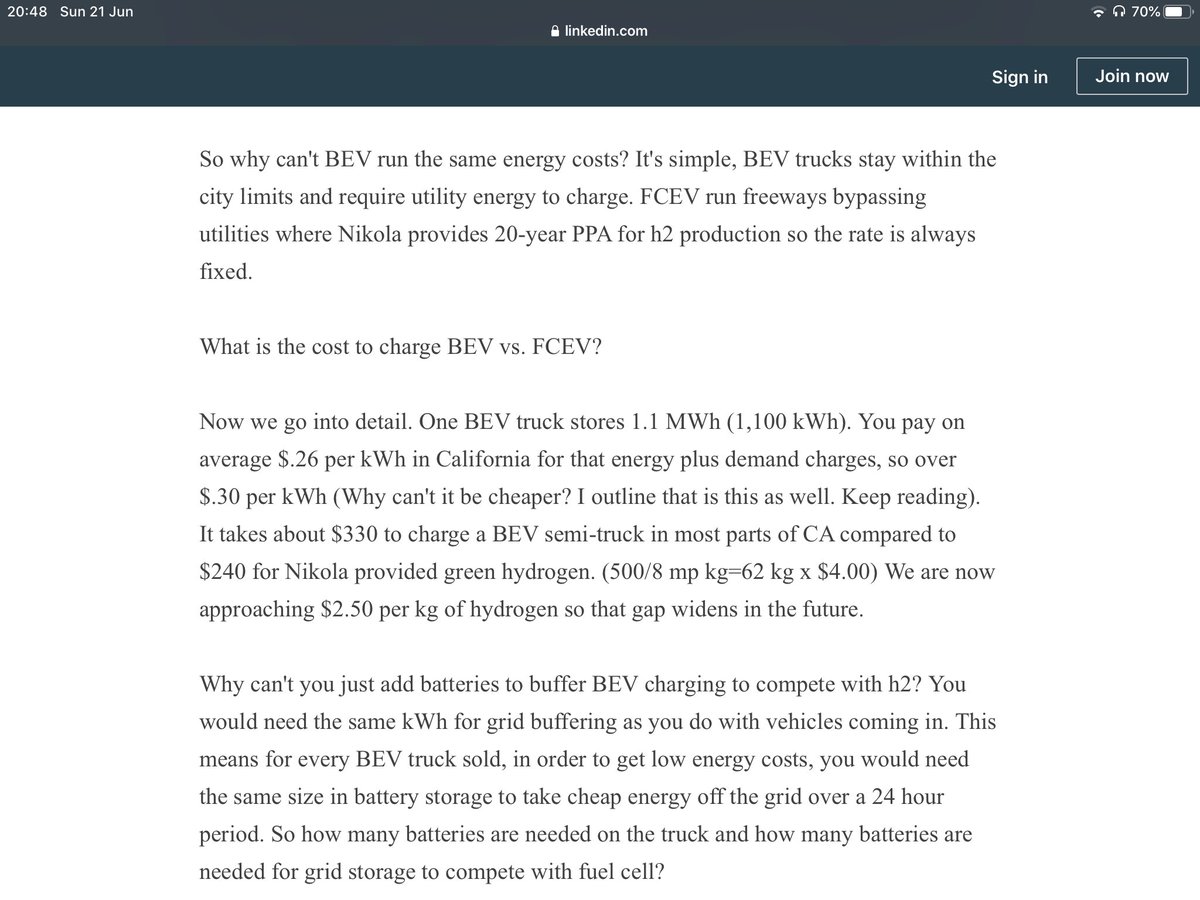
![[Wow, have I really written this much and I’m not even halfway through?]For the reasons in the directly above tweet, I am not denying nor agreeing with any of the points in the first paragraph here but instead refusing to fall for the red herring. It’s irrelevant! [Wow, have I really written this much and I’m not even halfway through?]For the reasons in the directly above tweet, I am not denying nor agreeing with any of the points in the first paragraph here but instead refusing to fall for the red herring. It’s irrelevant!](https://pbs.twimg.com/media/EbEQYTTX0AEpoao.jpg)
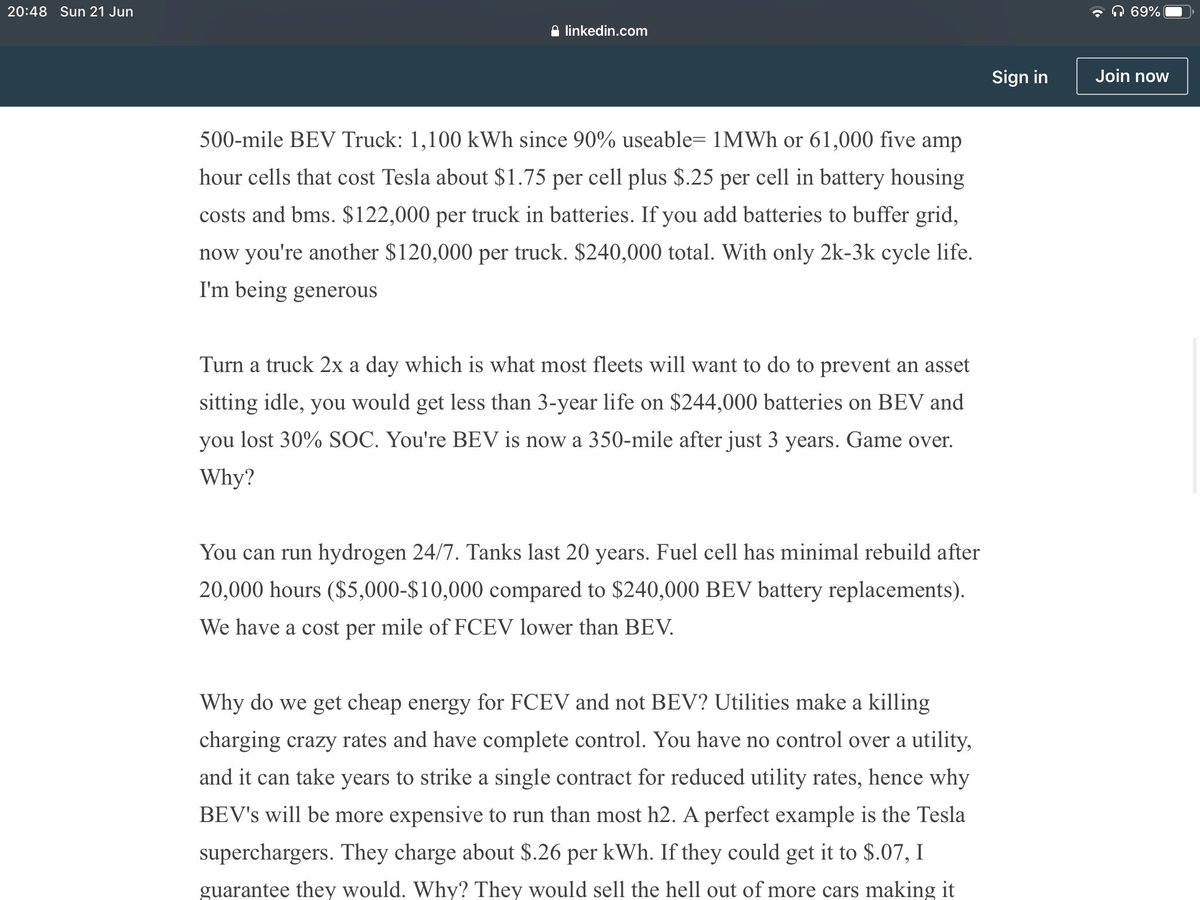
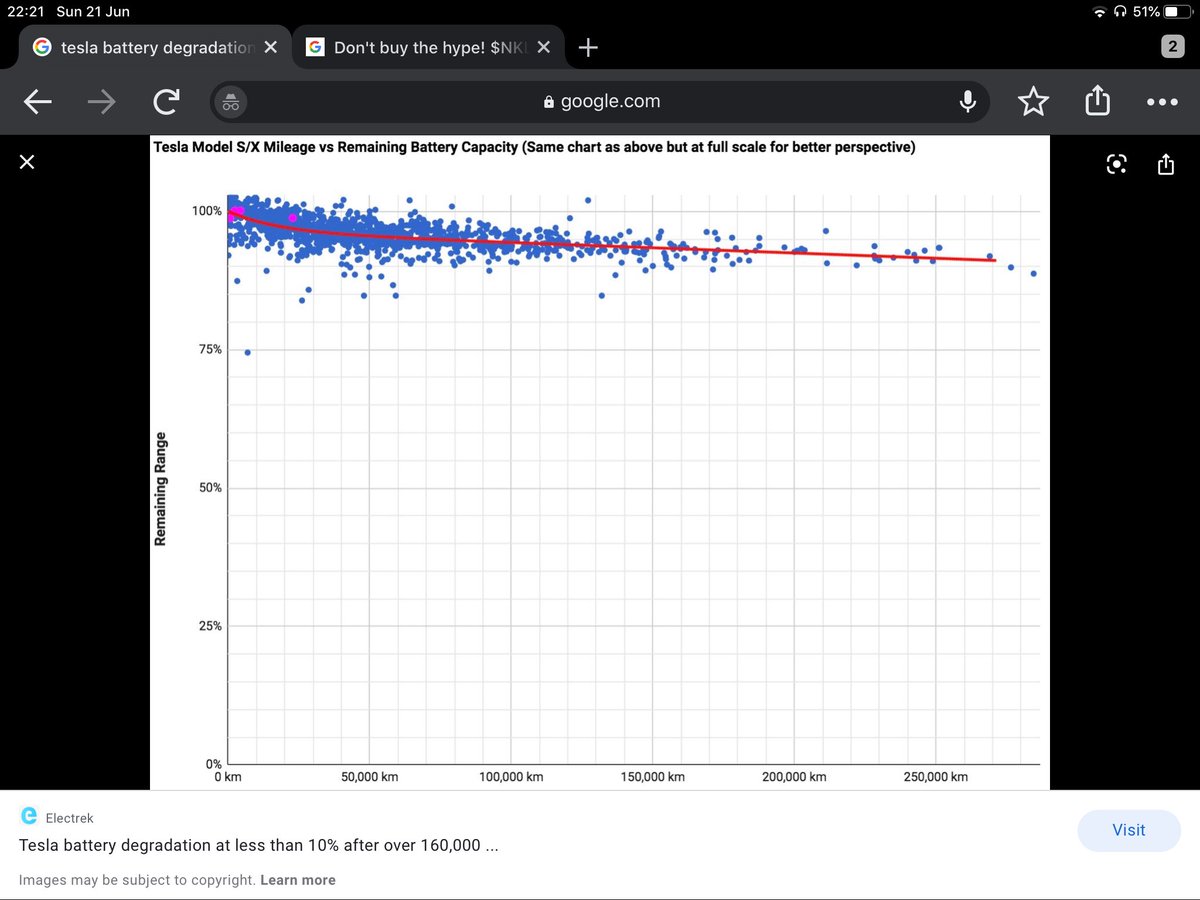
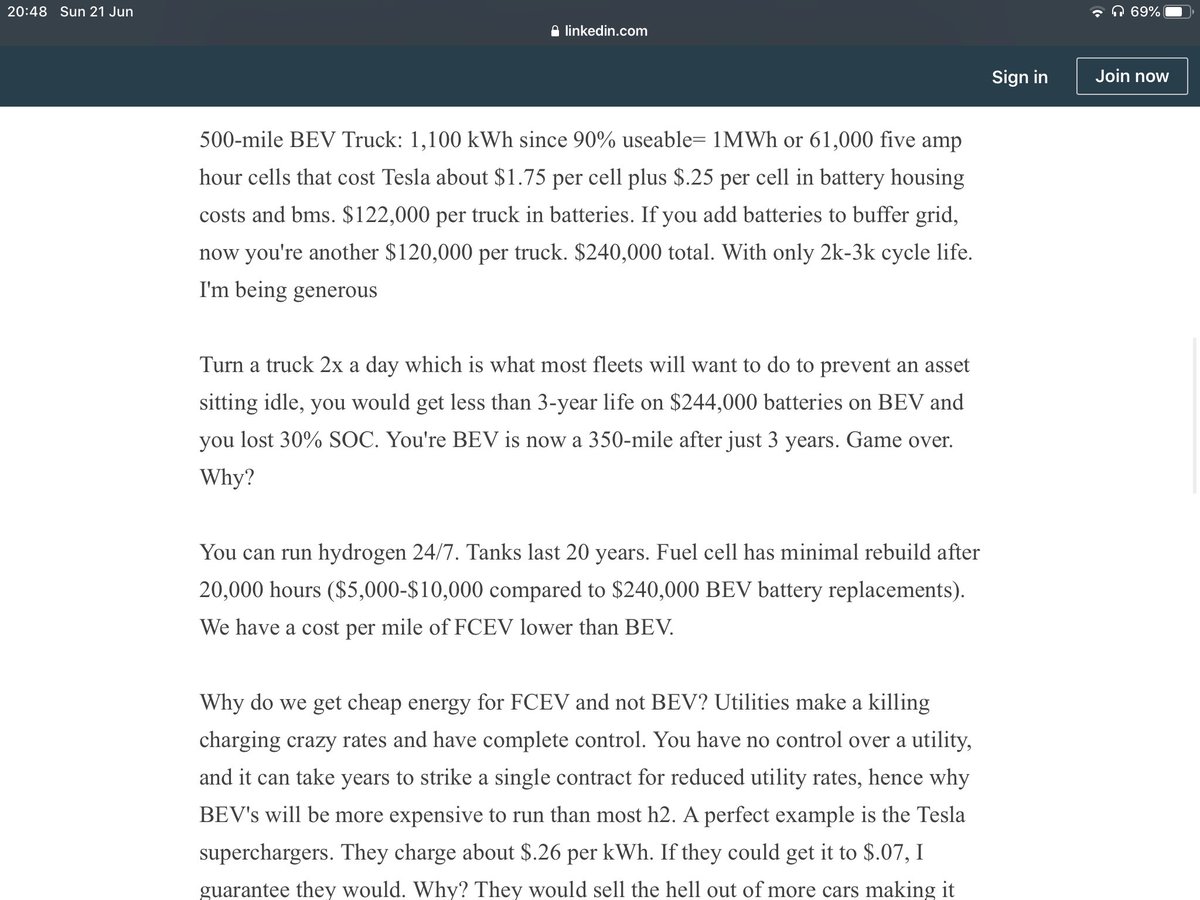
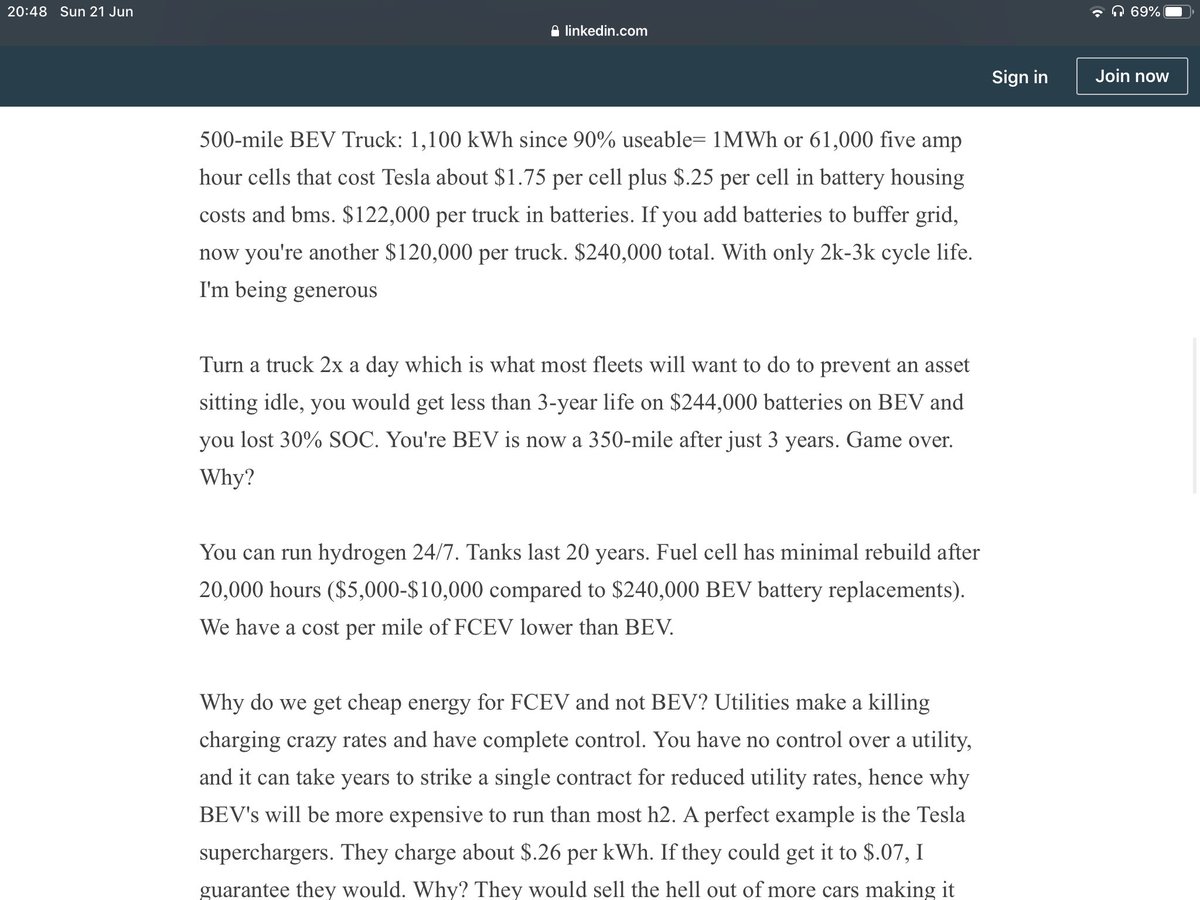
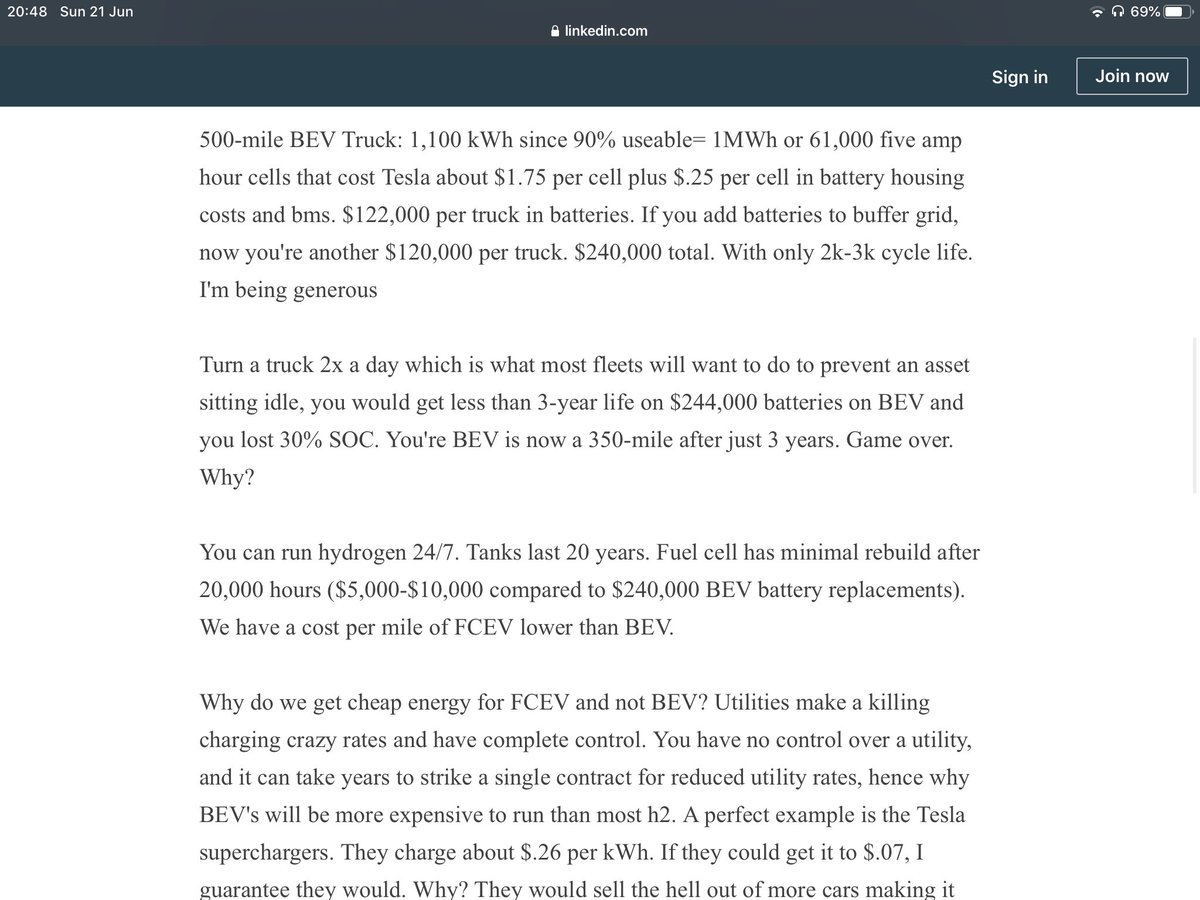
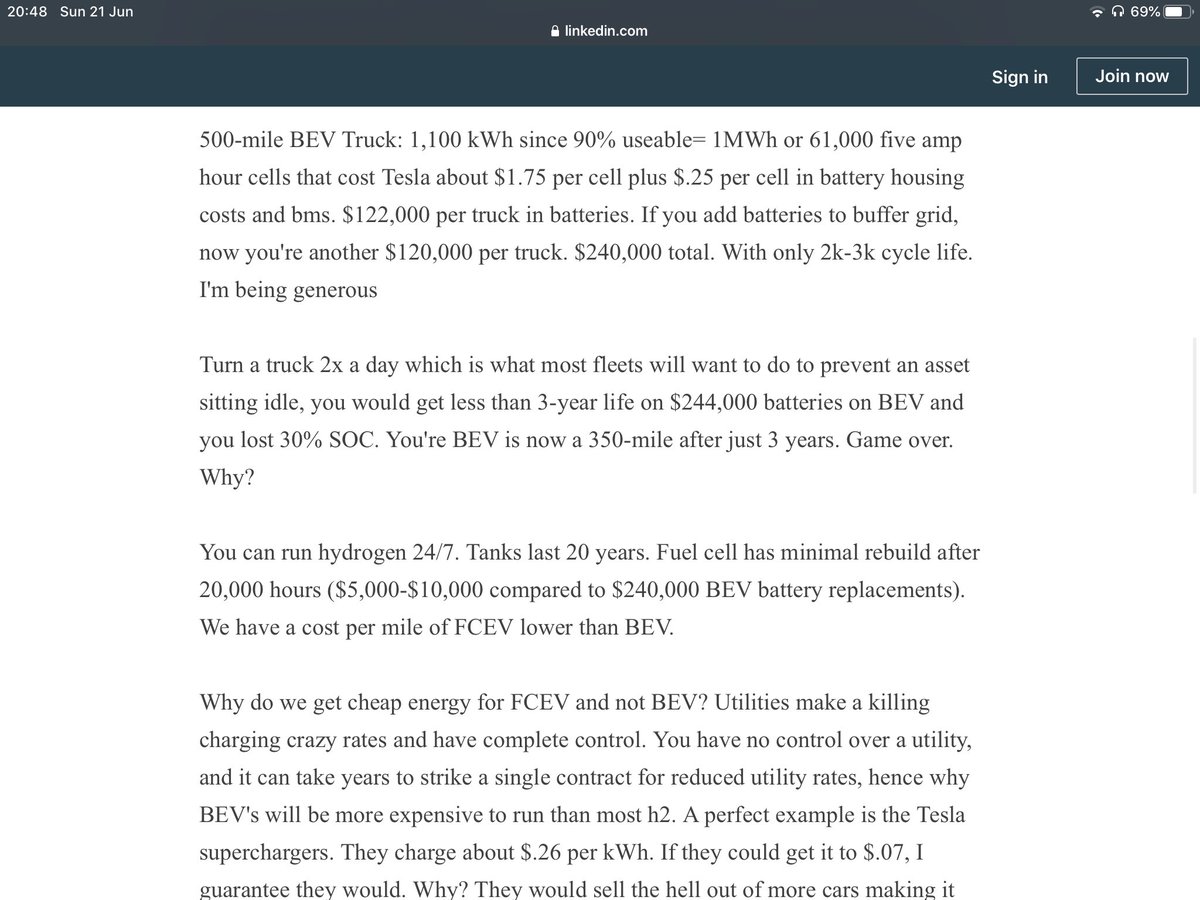
![[Onto screenshot 4 of 5]Luckily I can also largely dismiss this first paragraph too as I’ve already covered it. Tesla can sell energy at whatever price they want because they don’t have to sell at a profit. This advantage is unique to Tesla as they are the only company with a [Onto screenshot 4 of 5]Luckily I can also largely dismiss this first paragraph too as I’ve already covered it. Tesla can sell energy at whatever price they want because they don’t have to sell at a profit. This advantage is unique to Tesla as they are the only company with a](https://pbs.twimg.com/media/EbESu1eXgAAkiod.jpg)
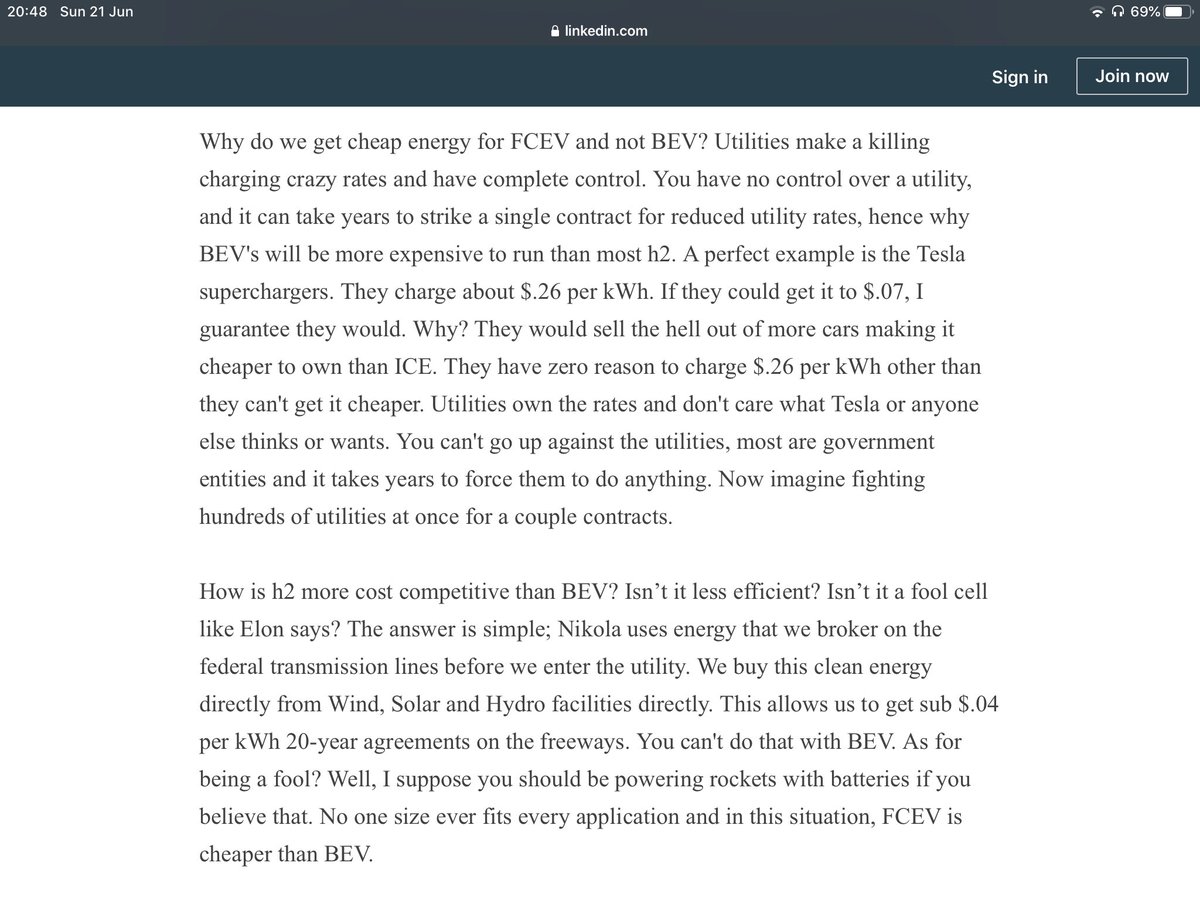
![Isn’t [fuel cell tech] less efficient? Isn’t it a fool cell like Elon says? The answer is simple; yes! Isn’t [fuel cell tech] less efficient? Isn’t it a fool cell like Elon says? The answer is simple; yes!](https://pbs.twimg.com/media/EbETYCRXsAQBJW1.jpg)
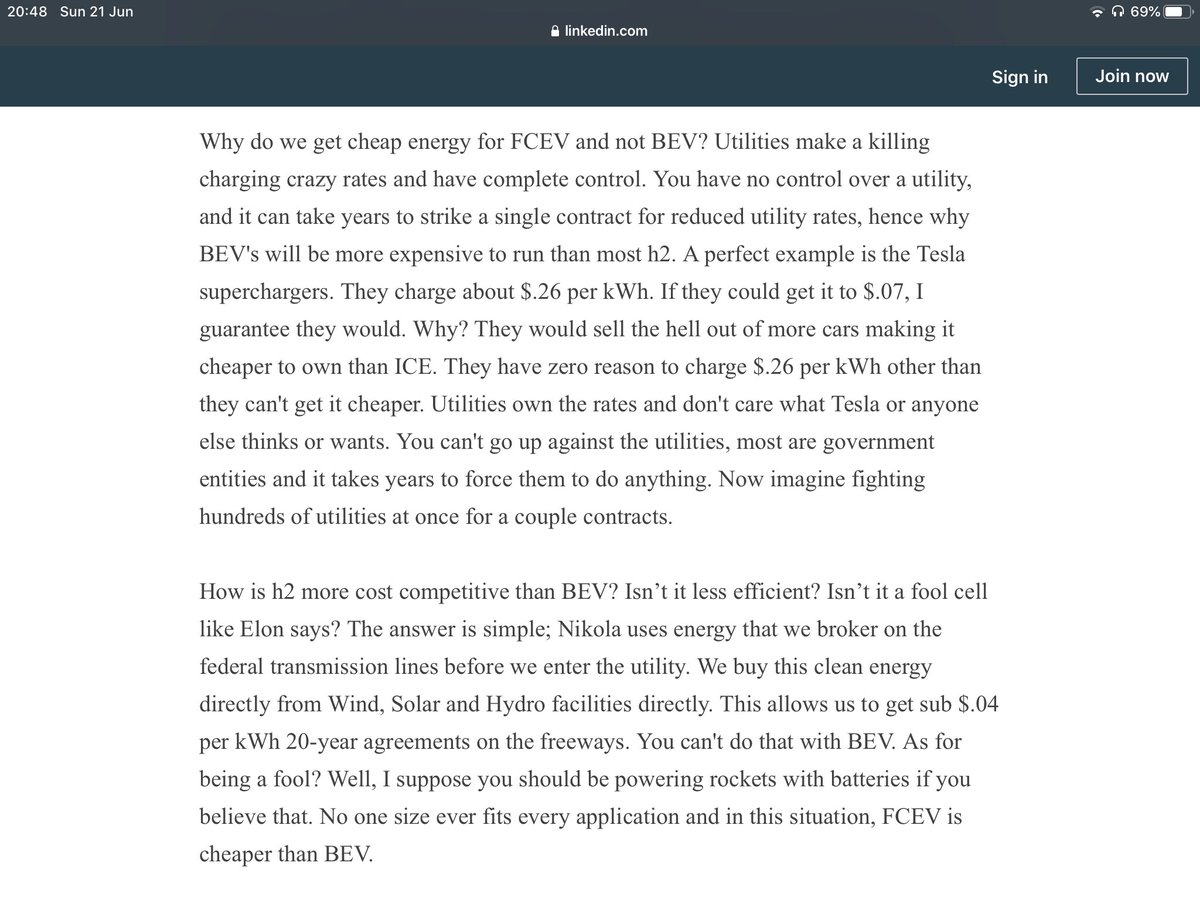
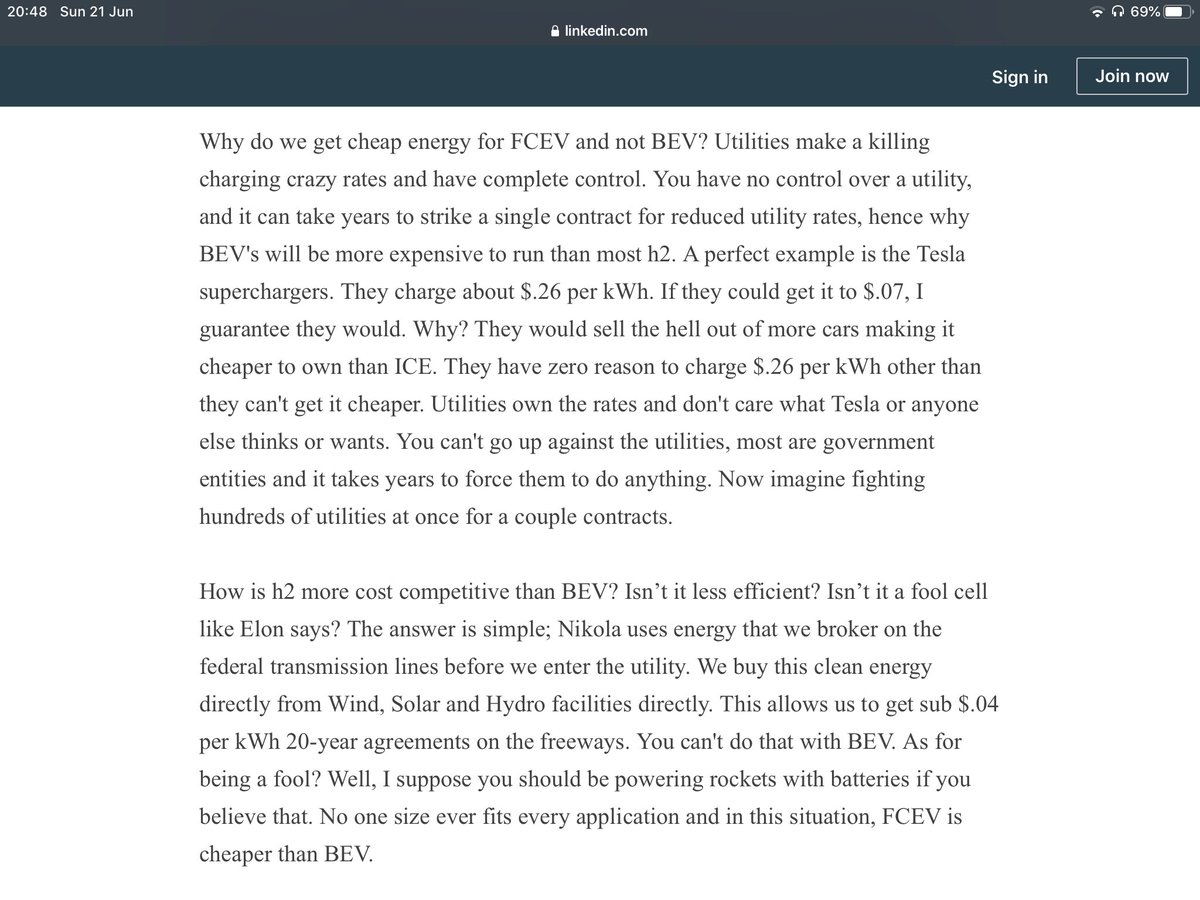
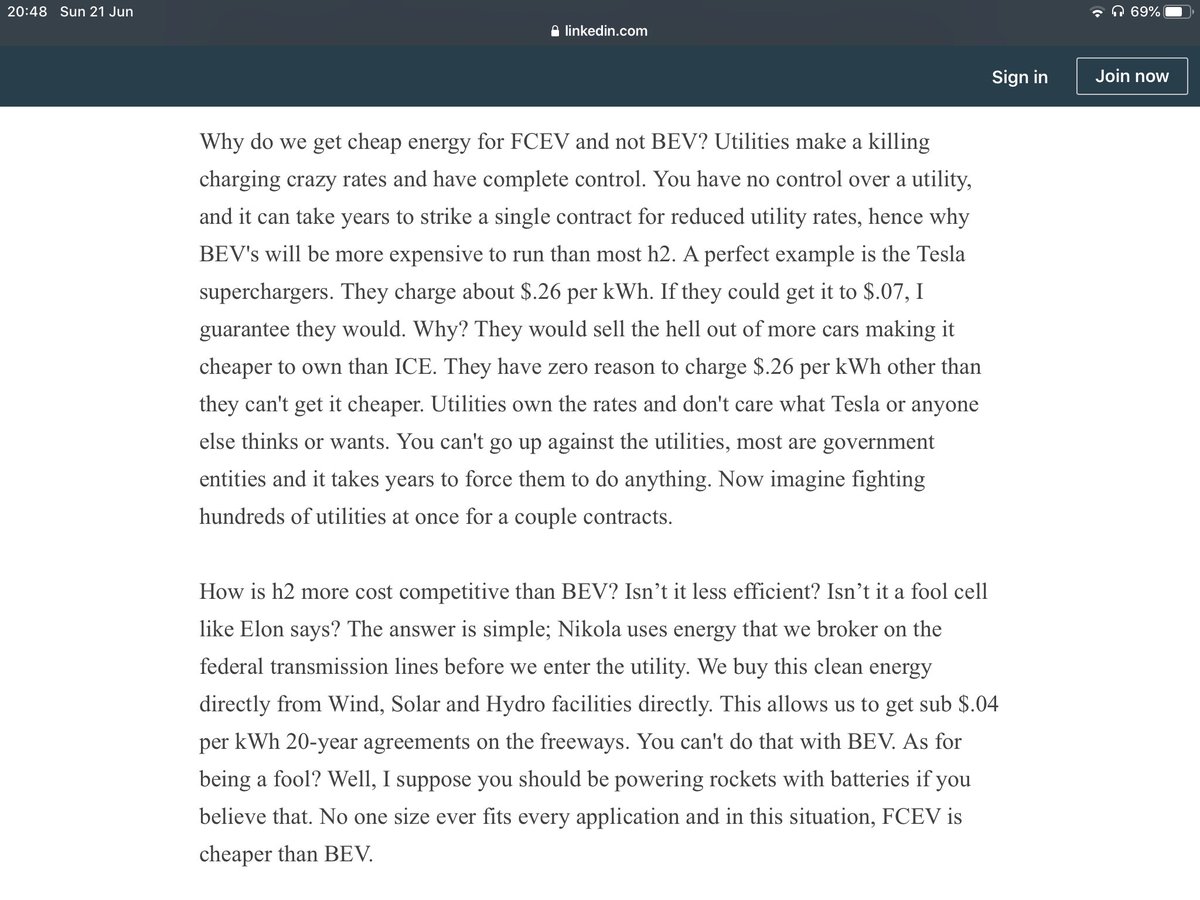
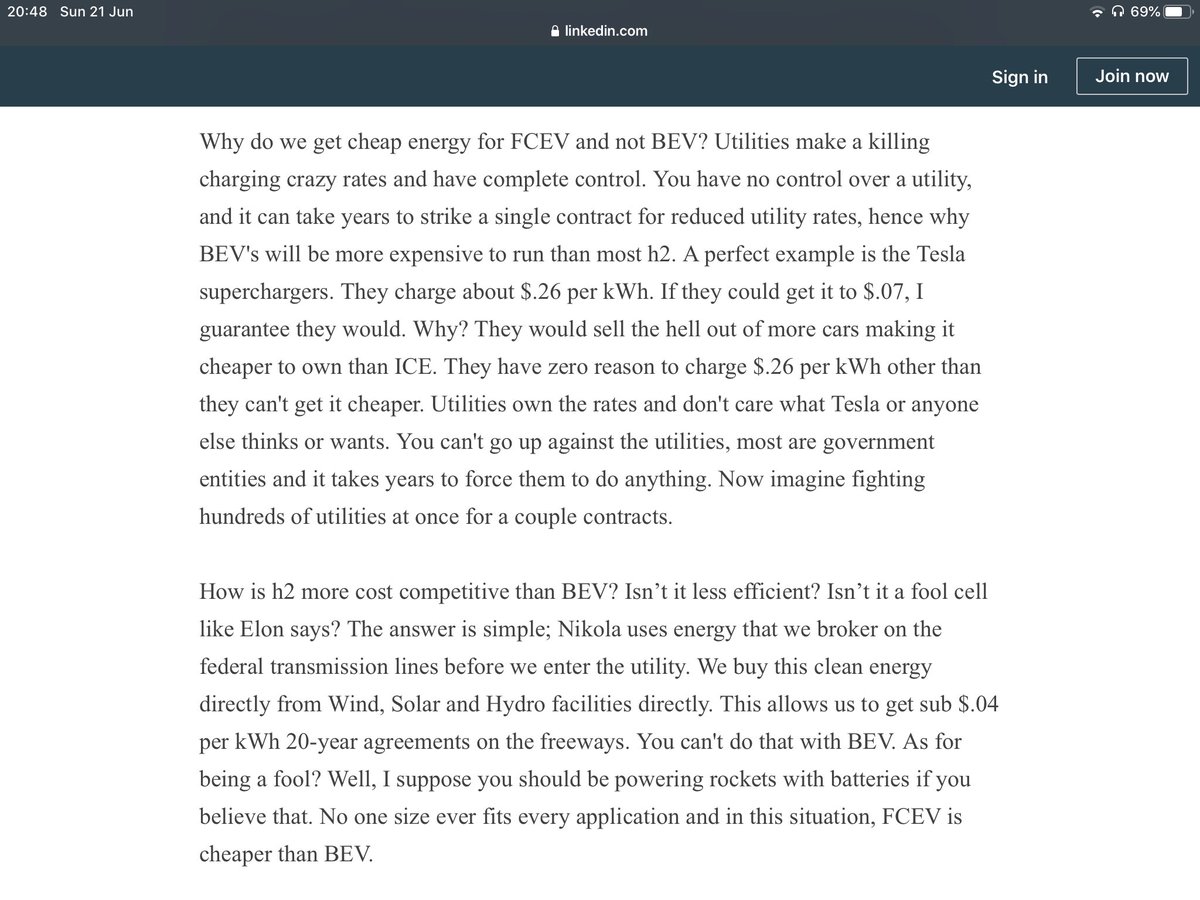
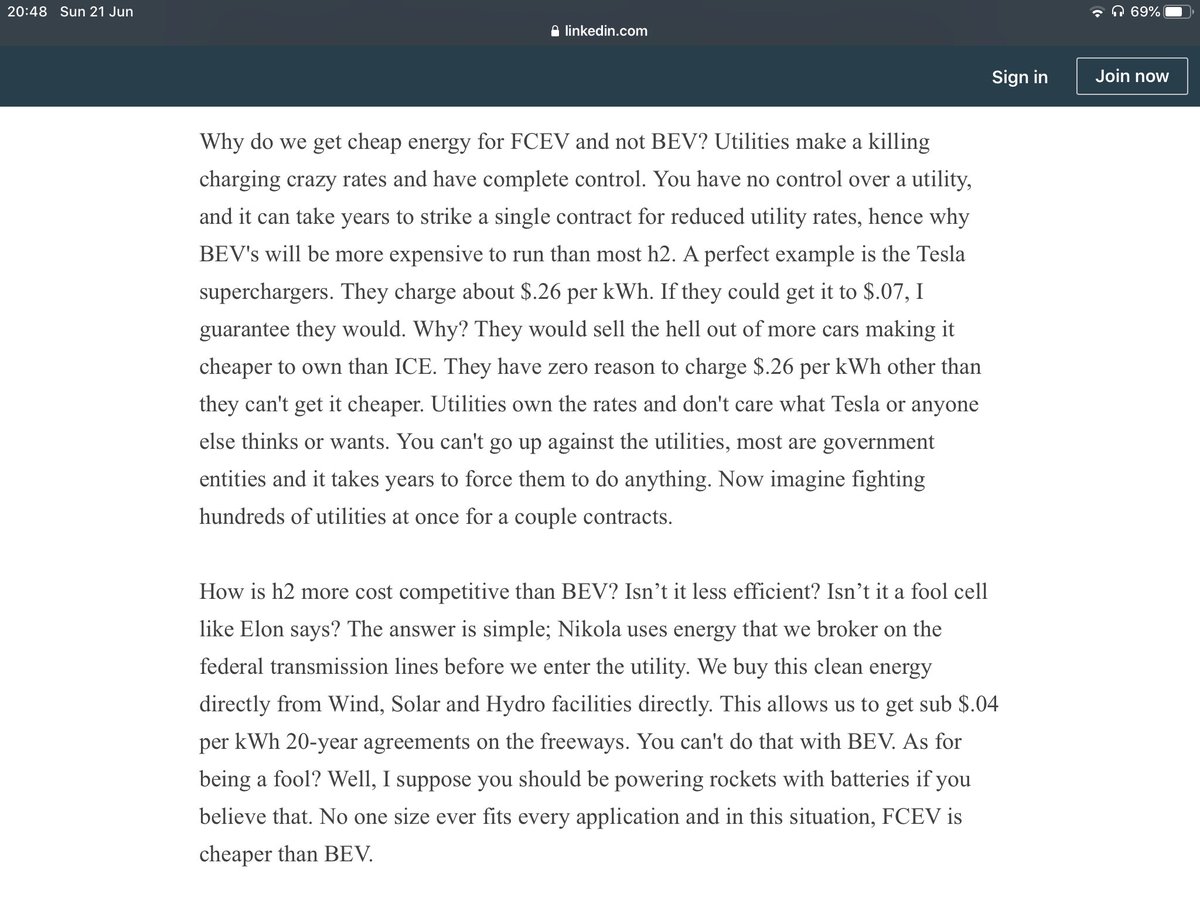
![[Last segment now]Weight: Trevor claims that the BEV weighs 10 000lbs more than their FCEV. Whilst this isn’t explicitly Tesla’s Semi he is referring to, contextually we can be pretty certain it is. So is the Tesla Semi too heavy? Well, according to https://www.popularmechanics.com/cars/truc... not [Last segment now]Weight: Trevor claims that the BEV weighs 10 000lbs more than their FCEV. Whilst this isn’t explicitly Tesla’s Semi he is referring to, contextually we can be pretty certain it is. So is the Tesla Semi too heavy? Well, according to https://www.popularmechanics.com/cars/truc... not](https://pbs.twimg.com/media/EbEXuAHXkAEaK2n.jpg)
